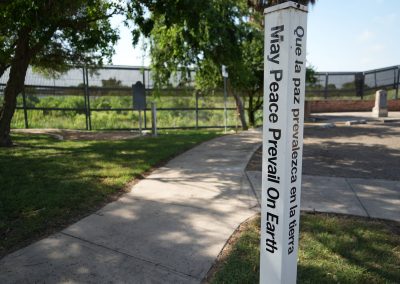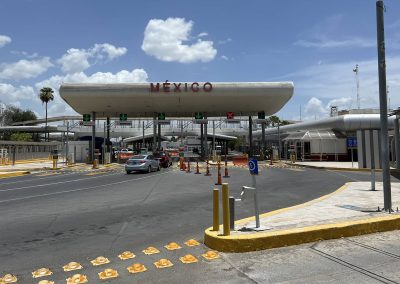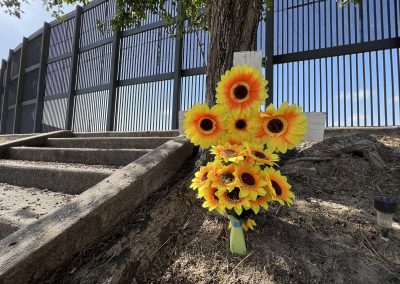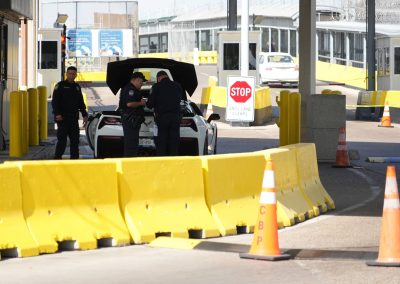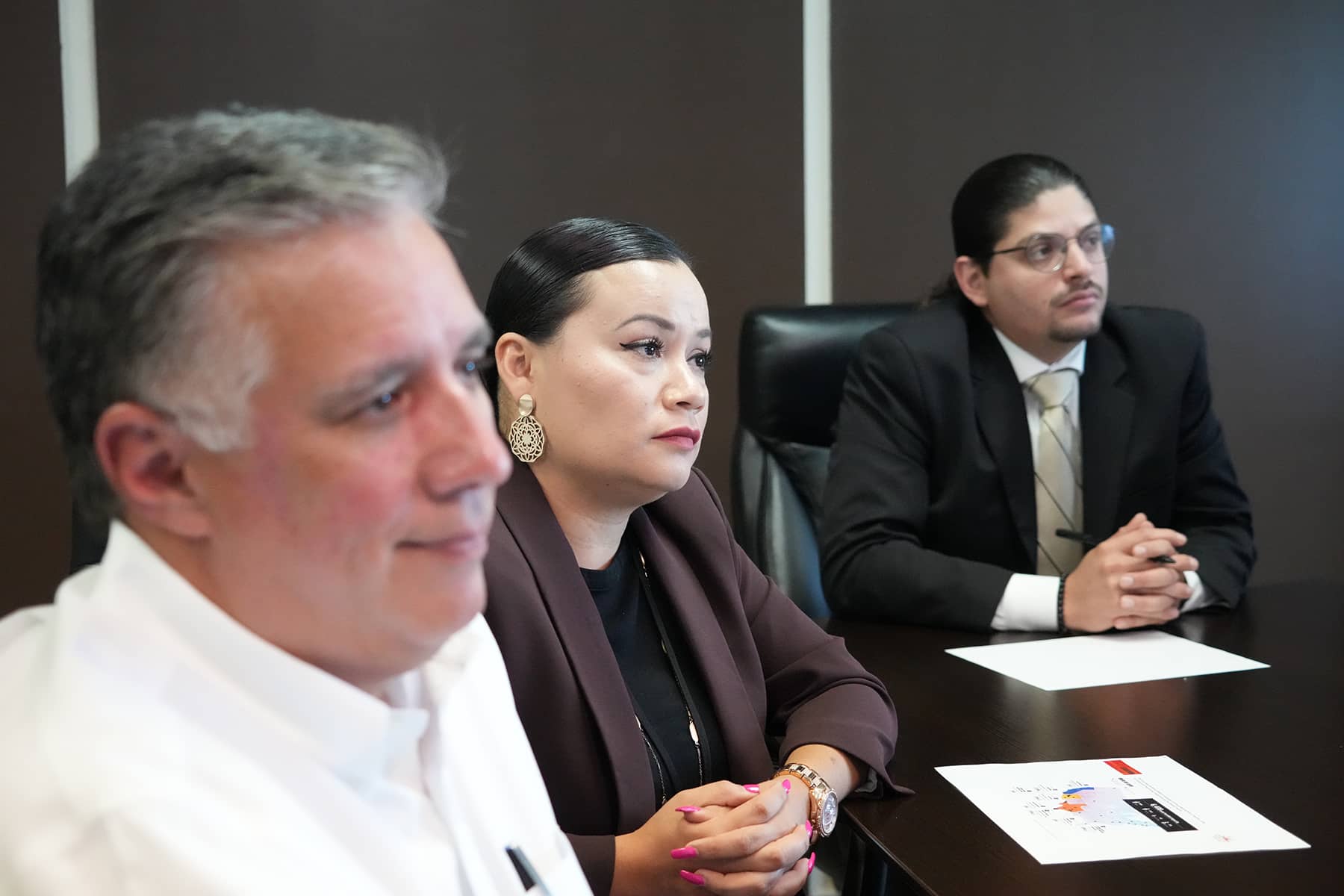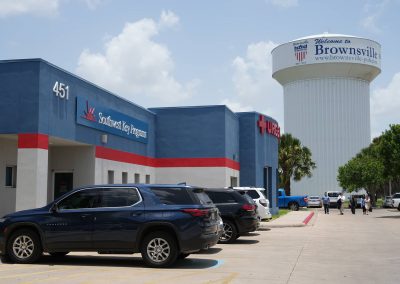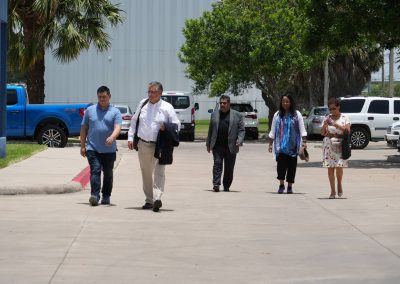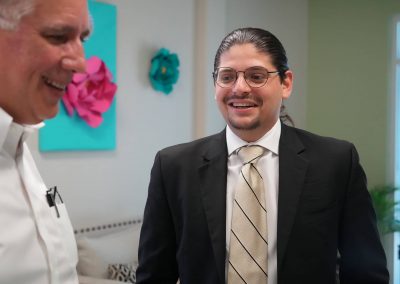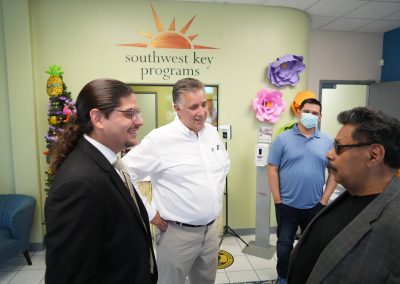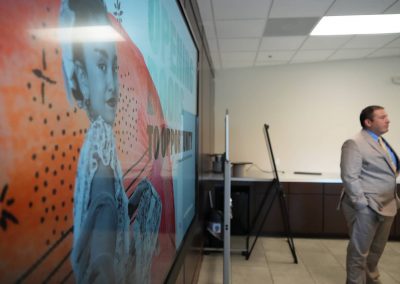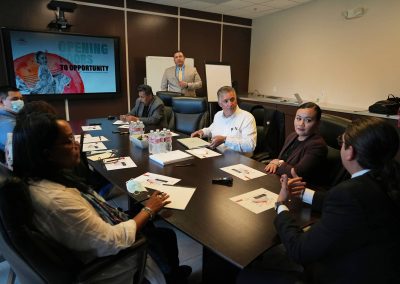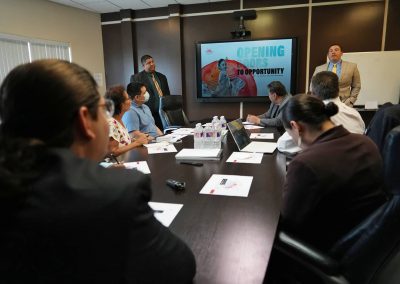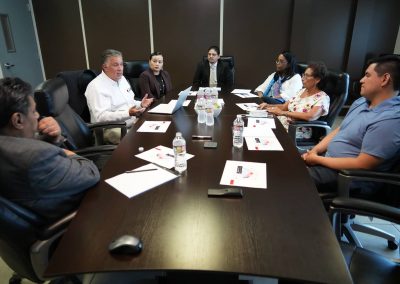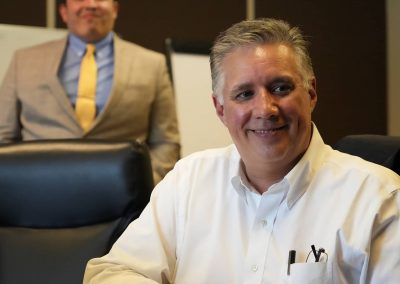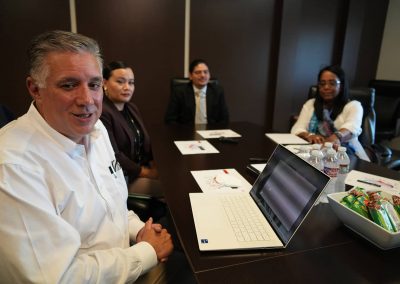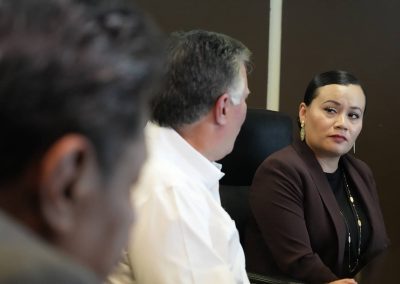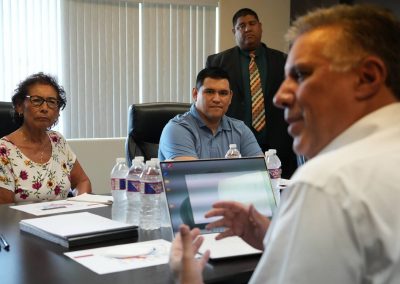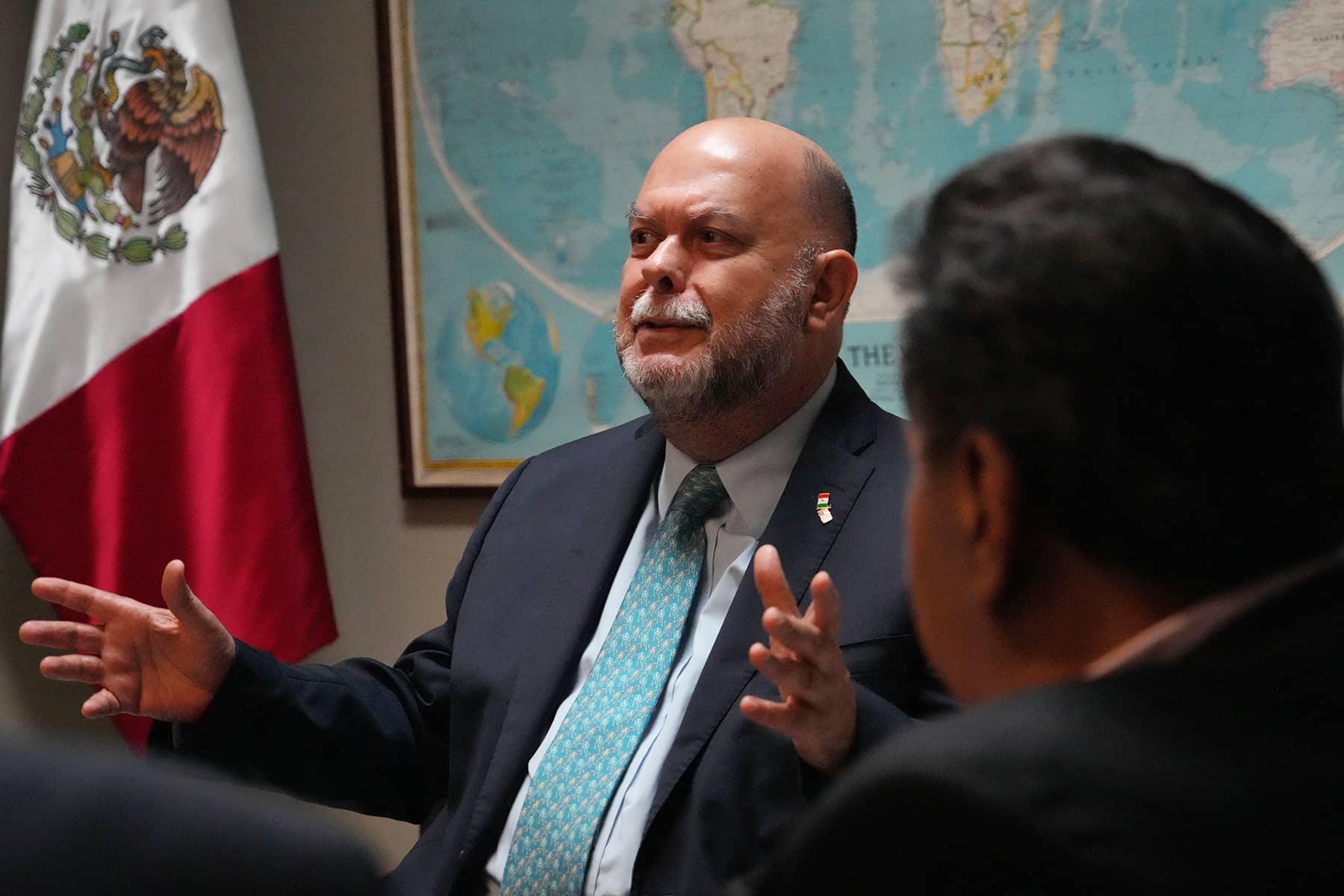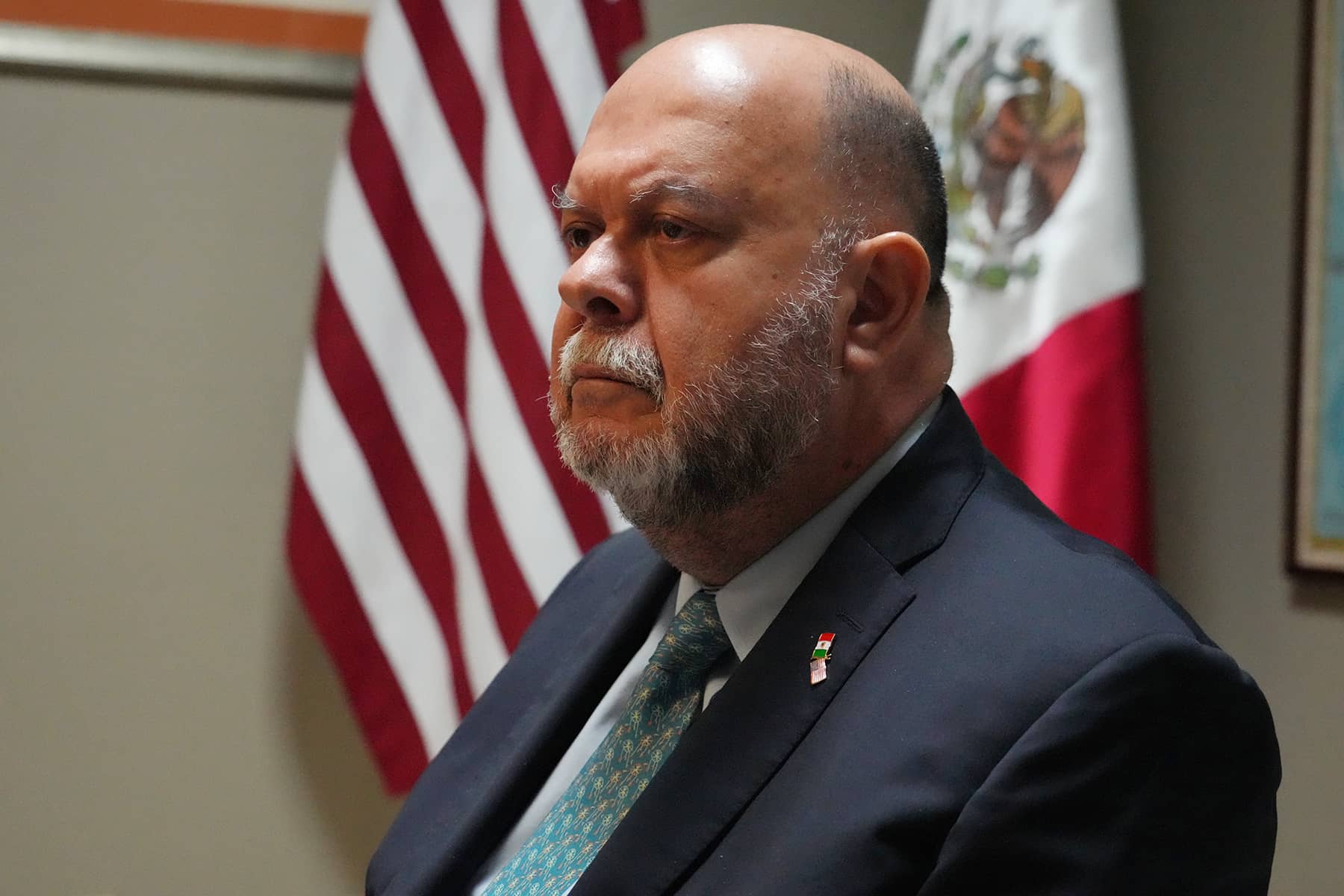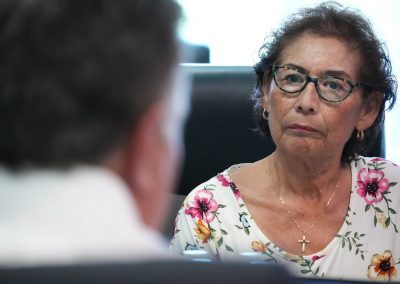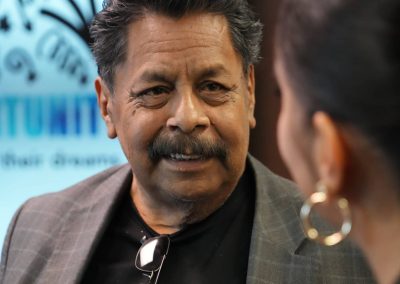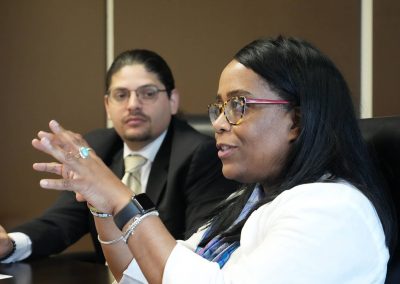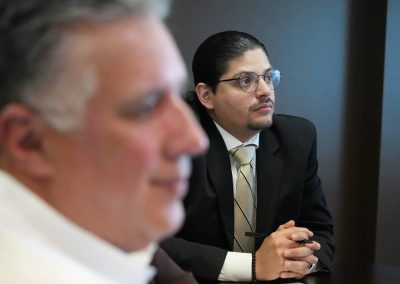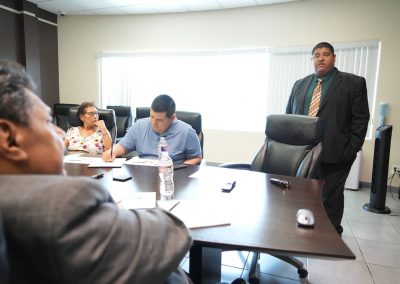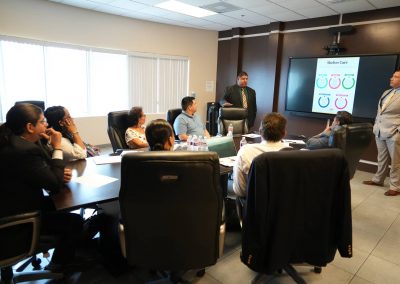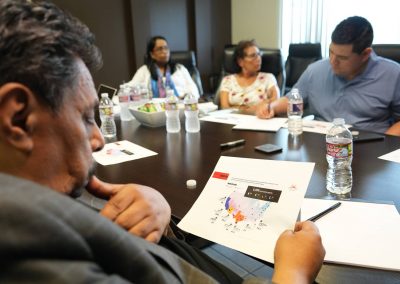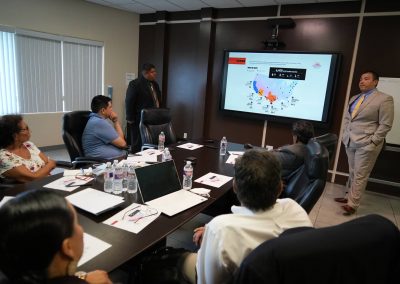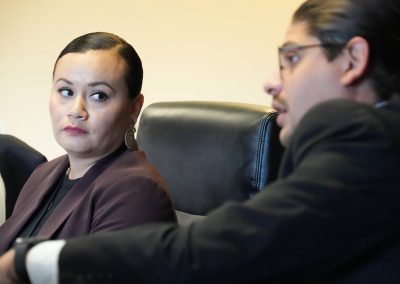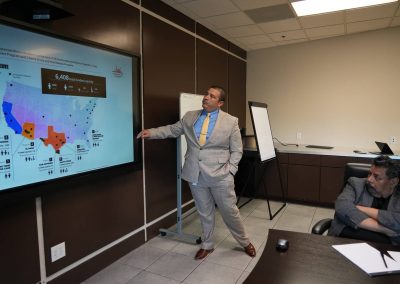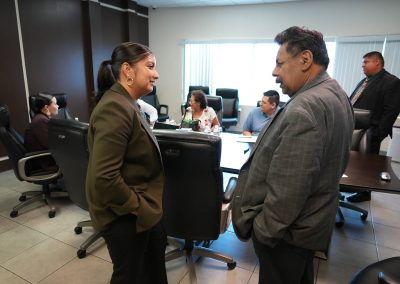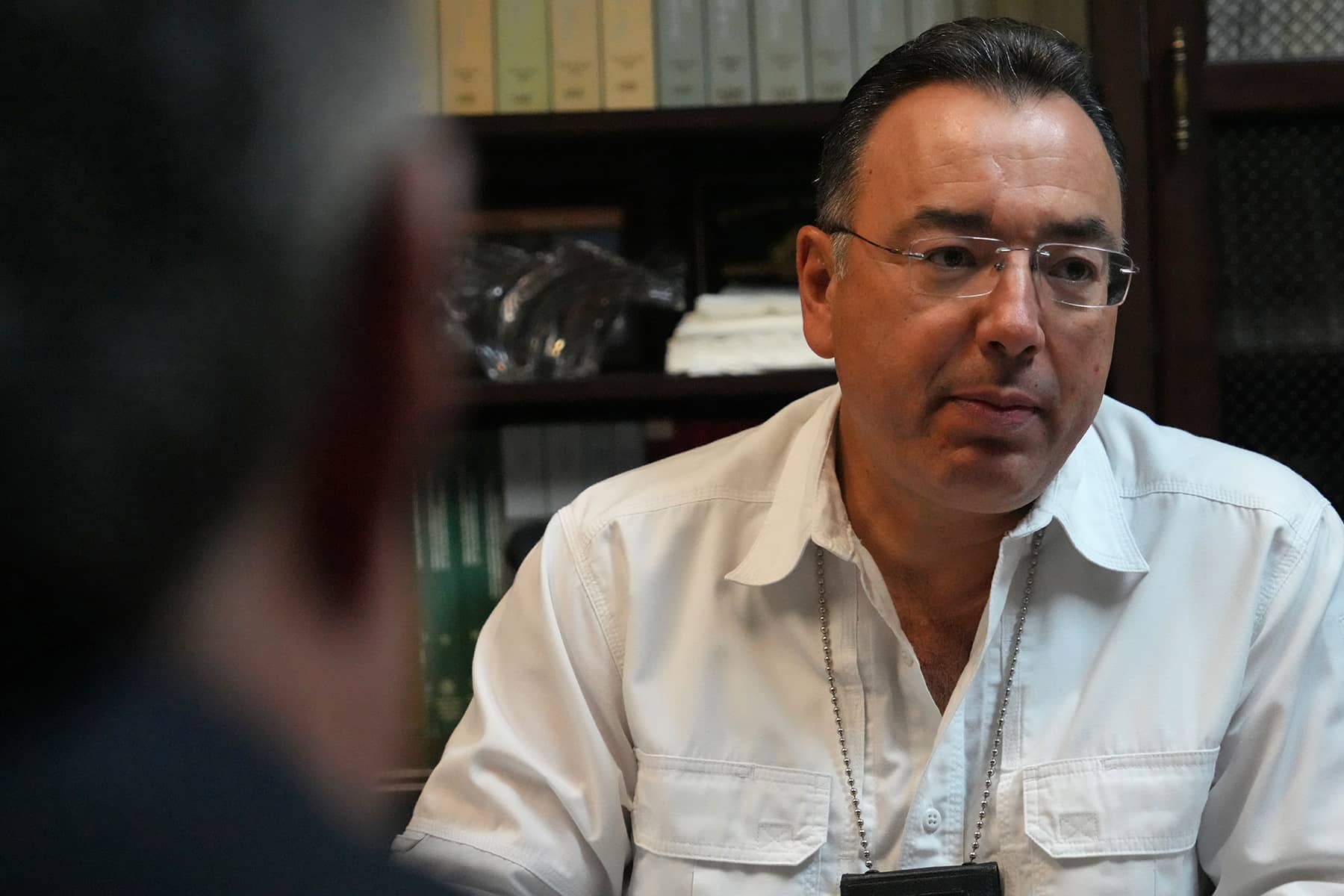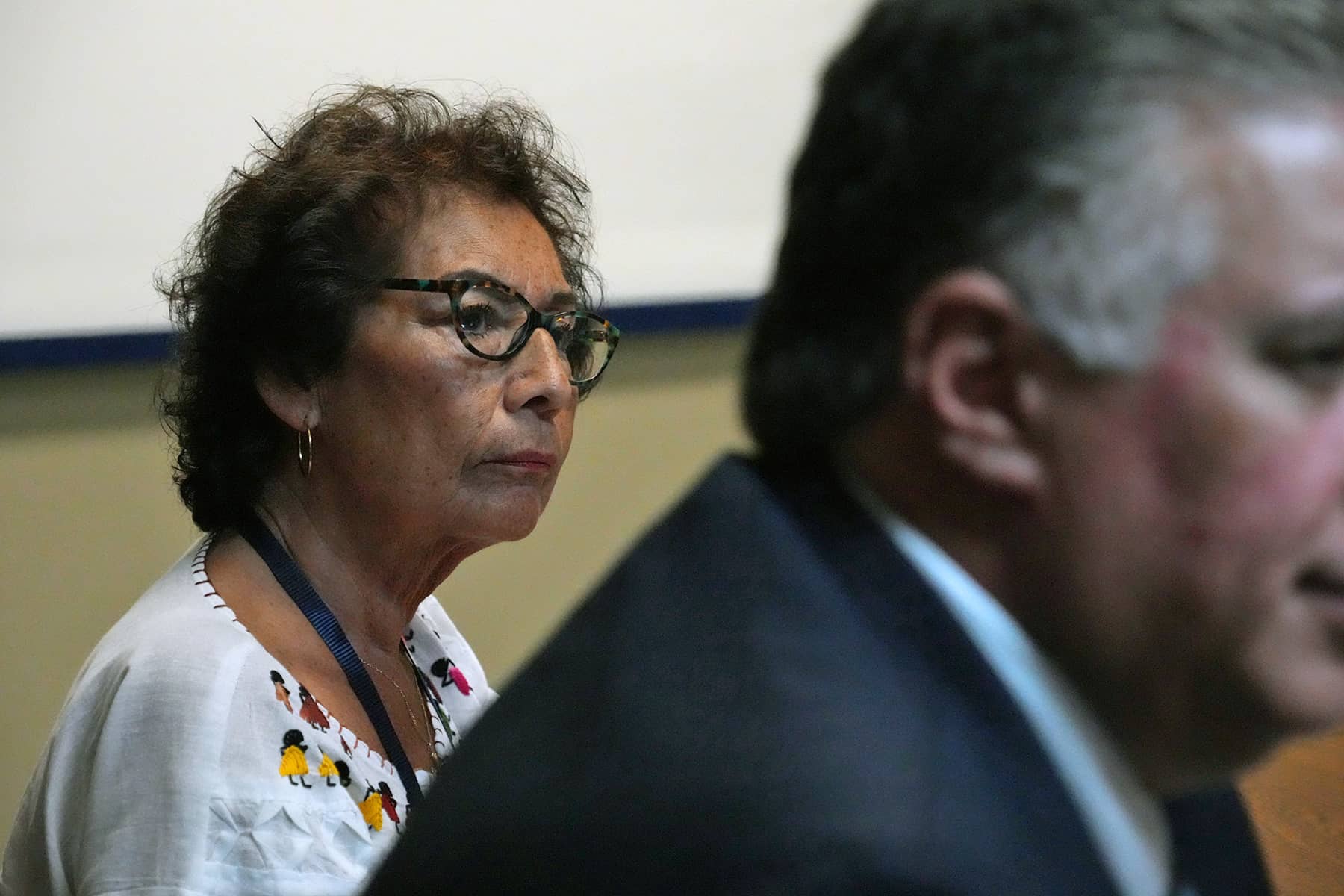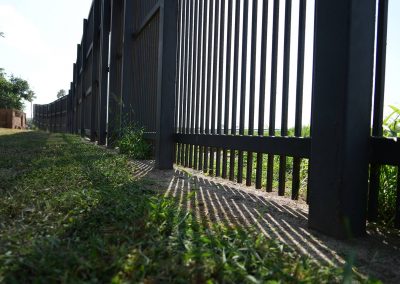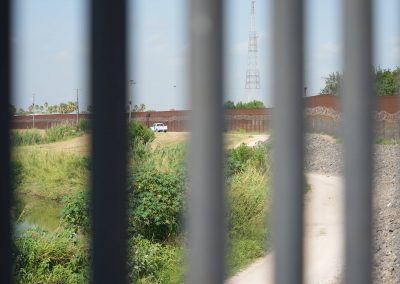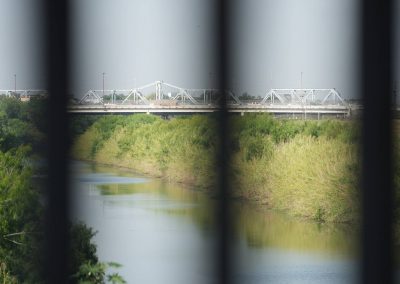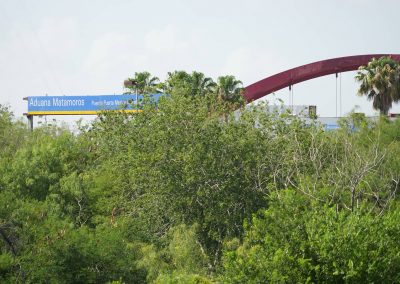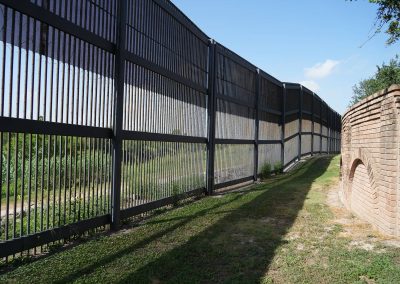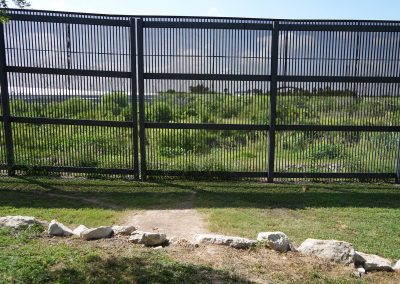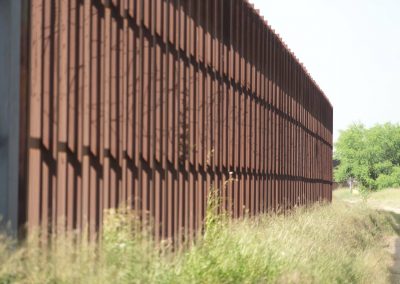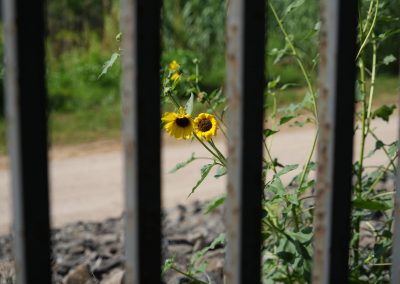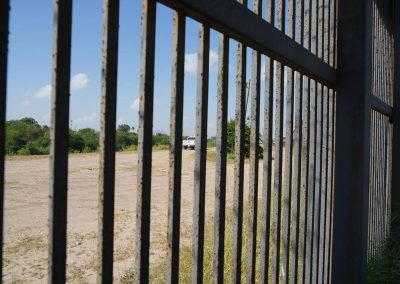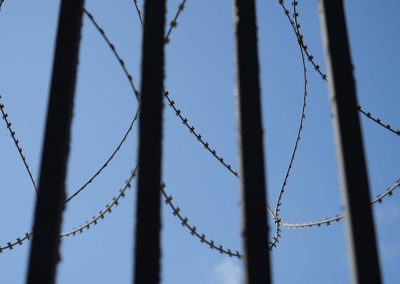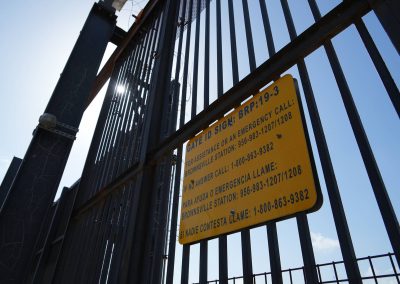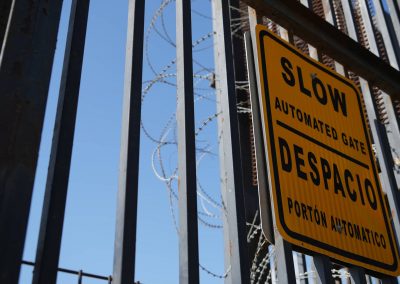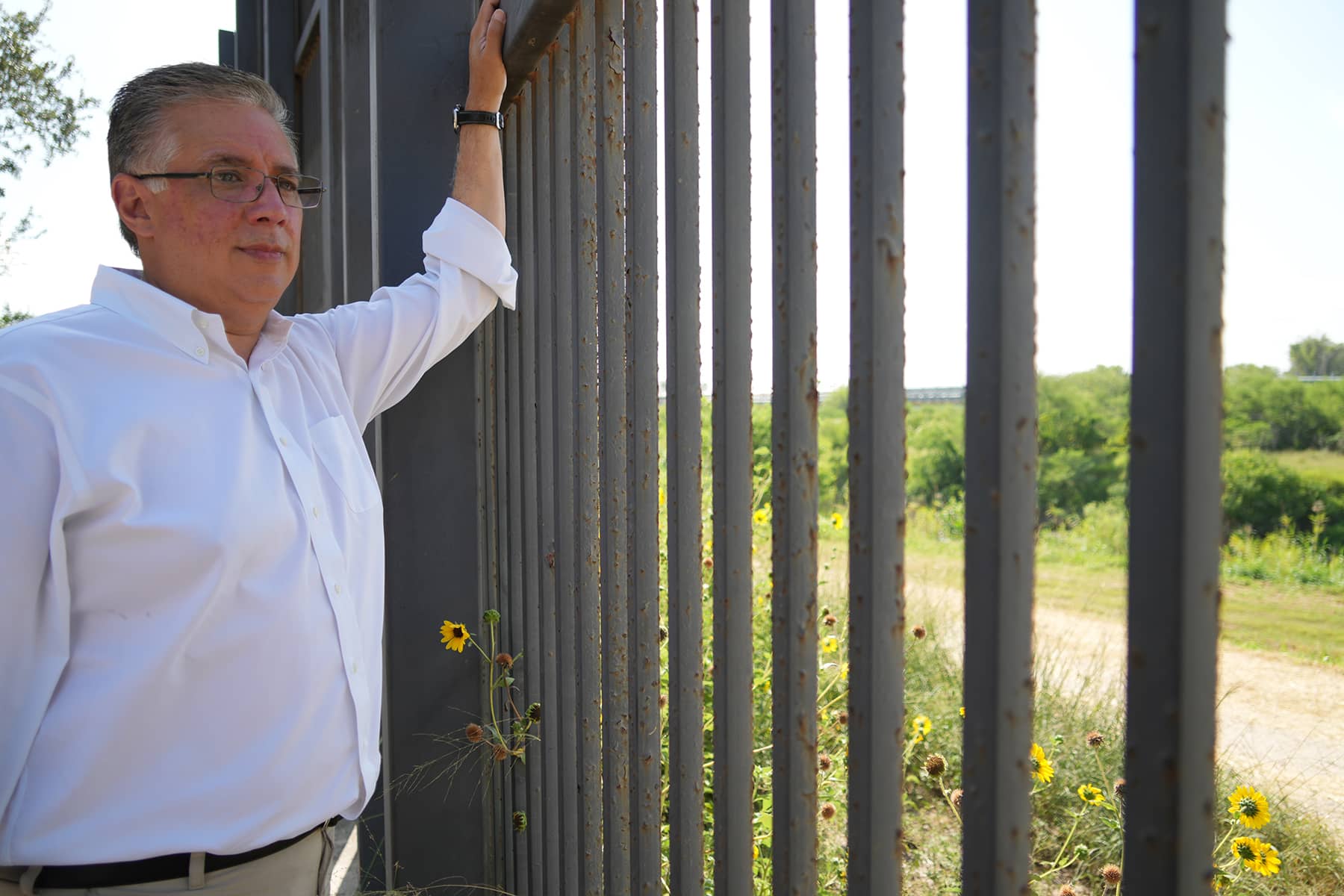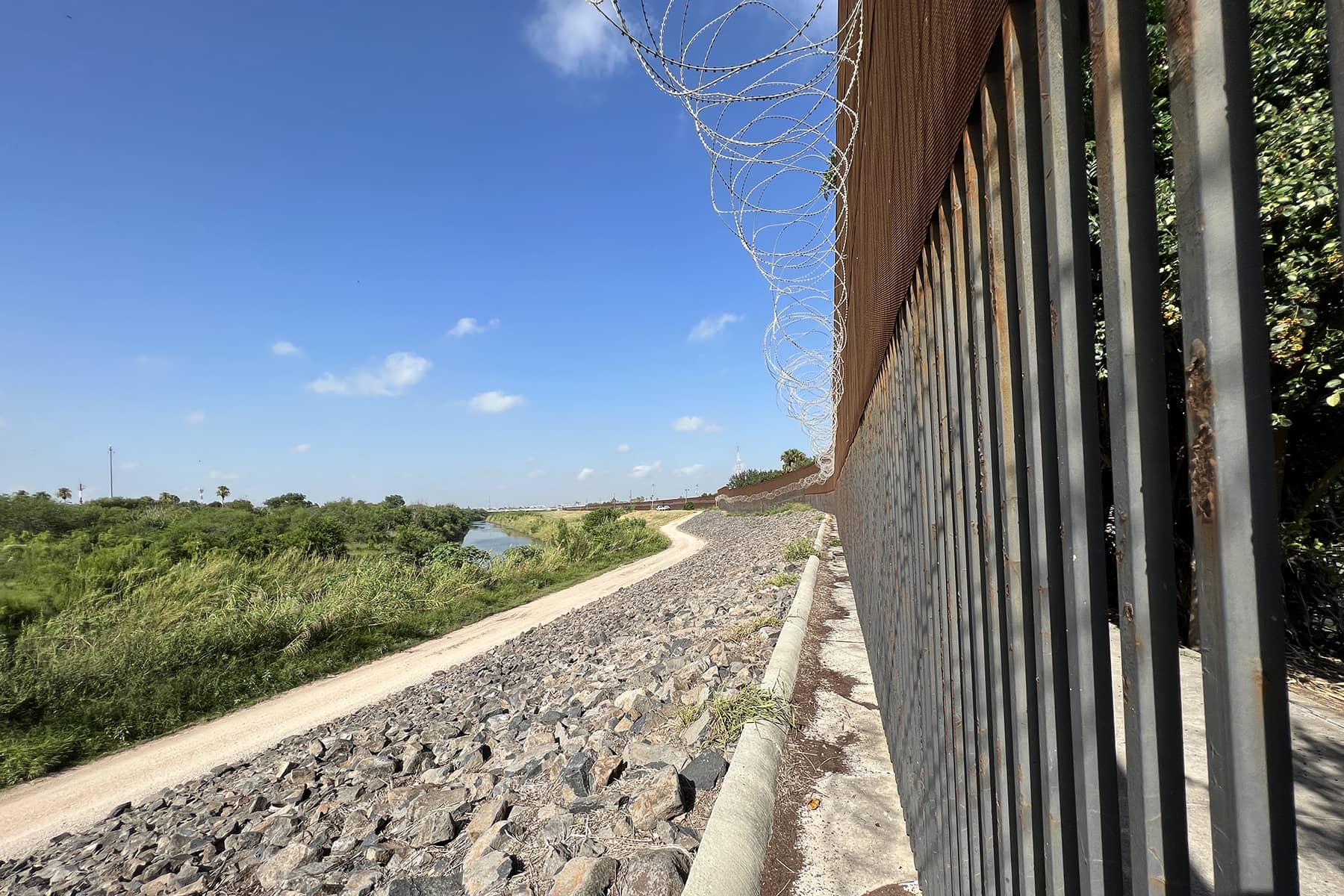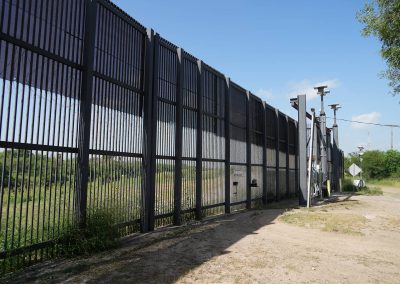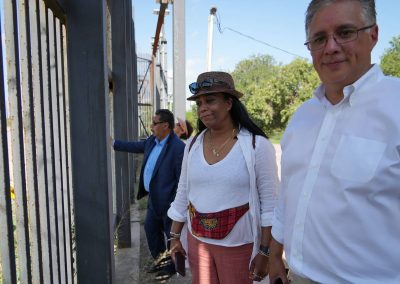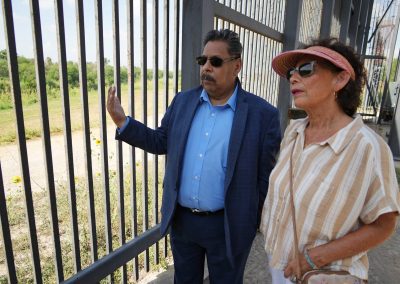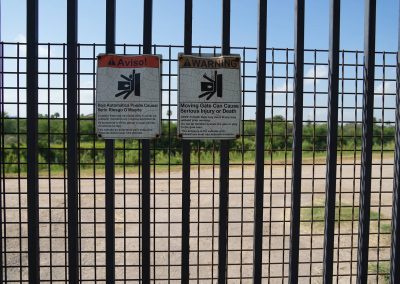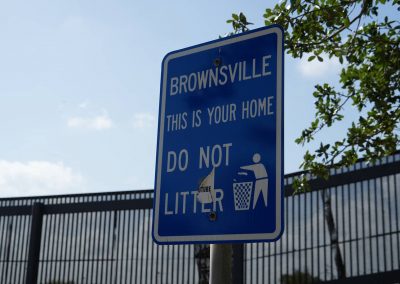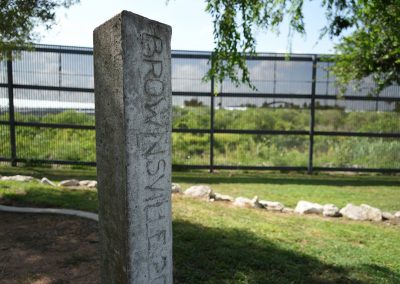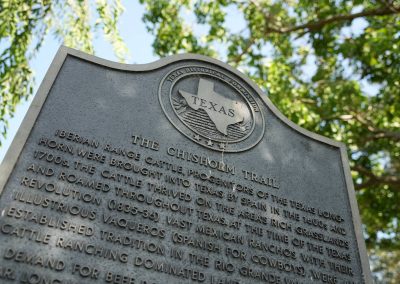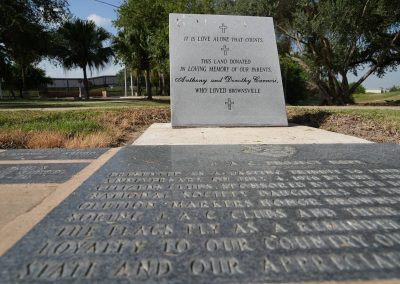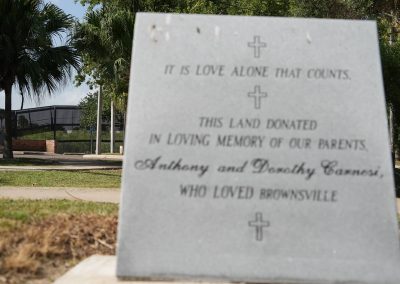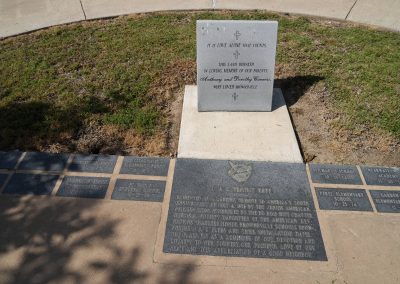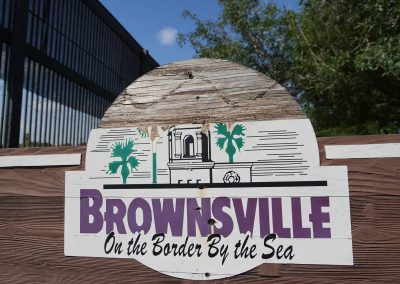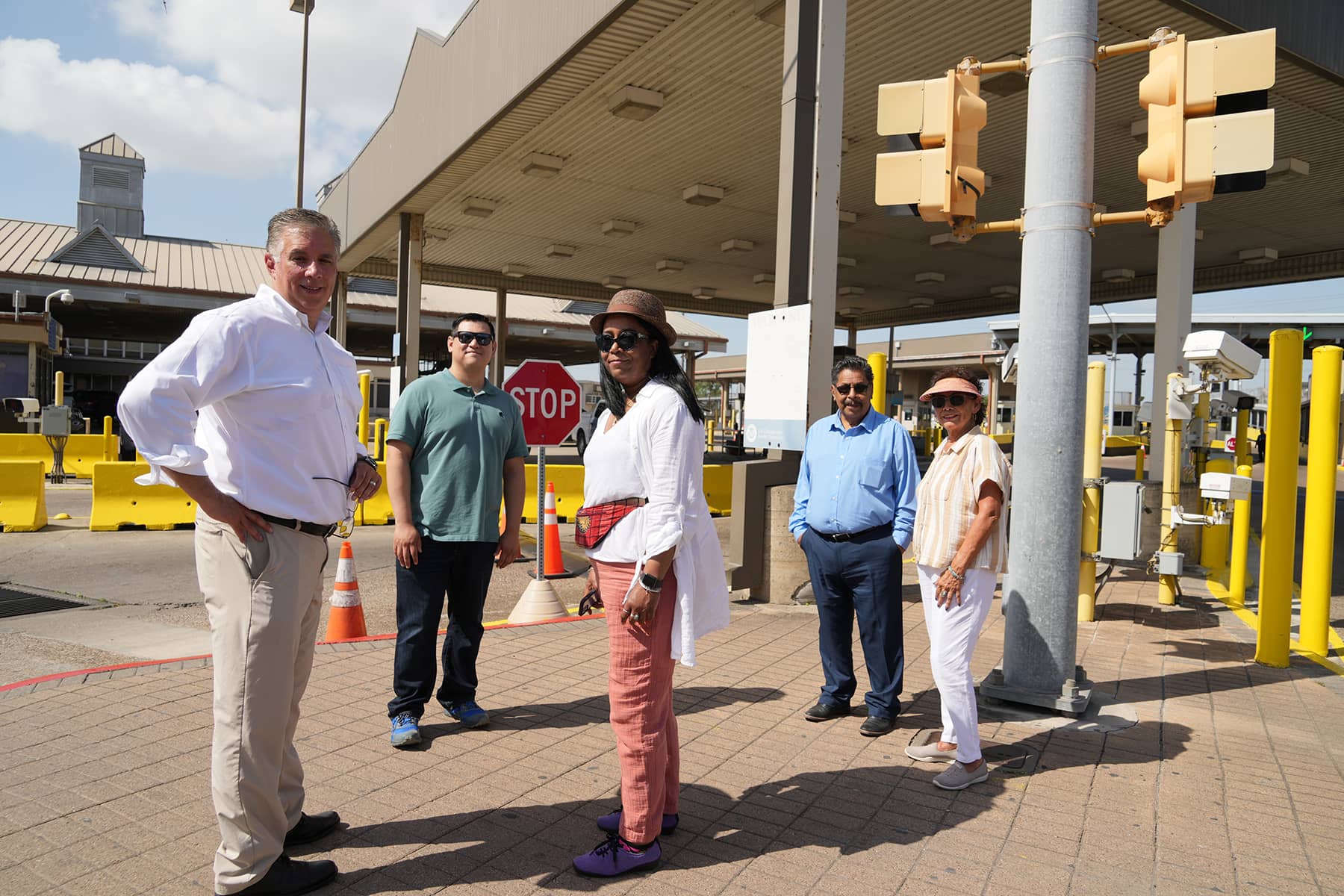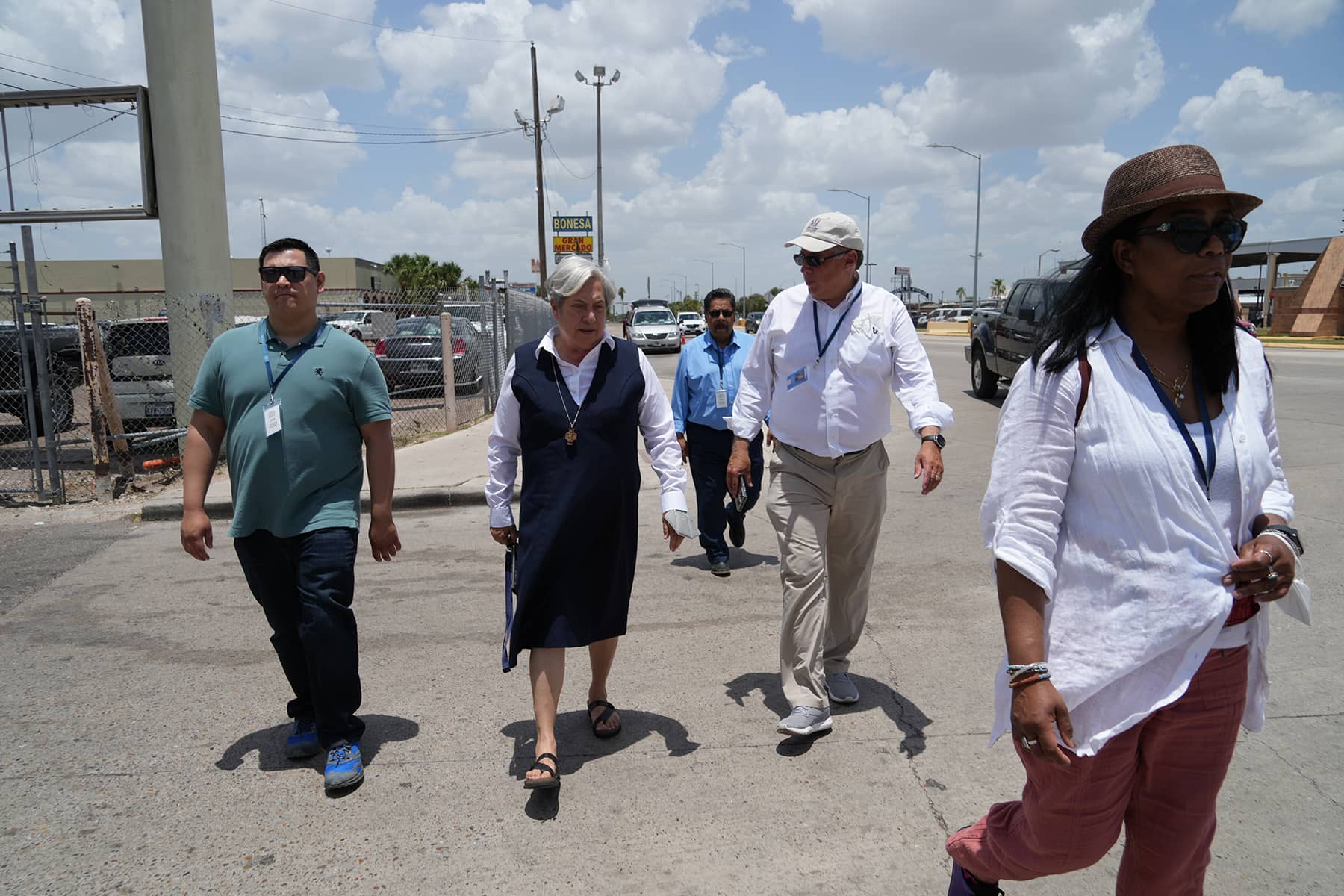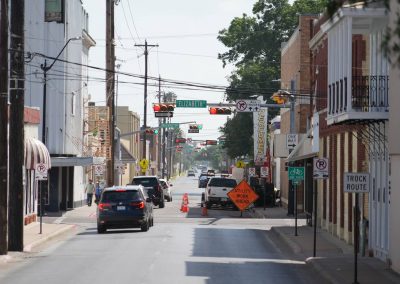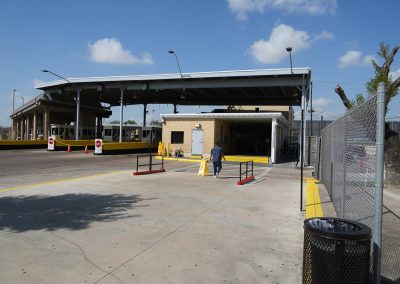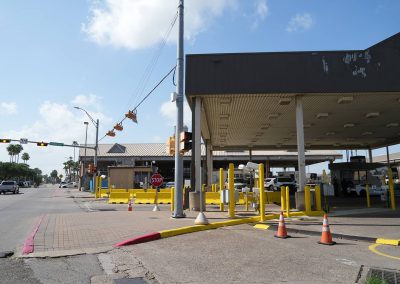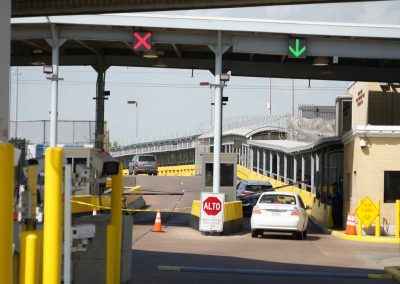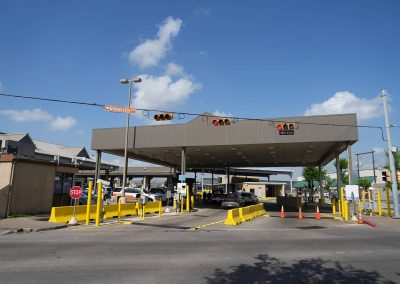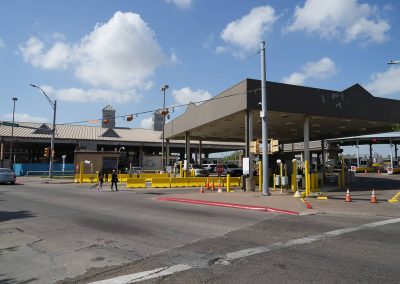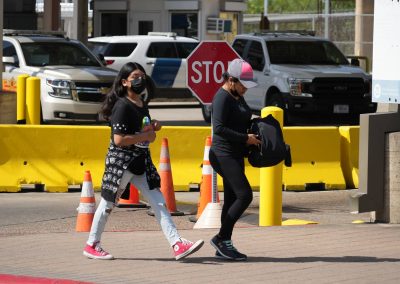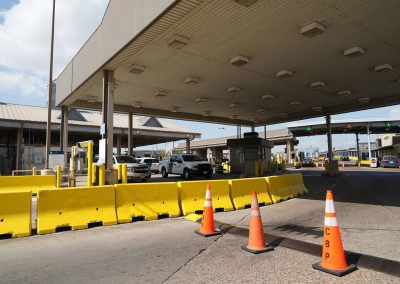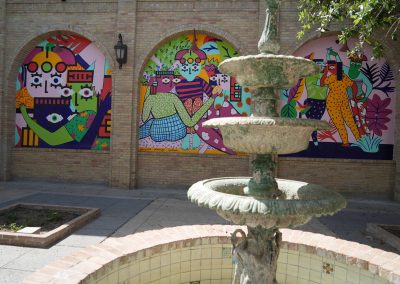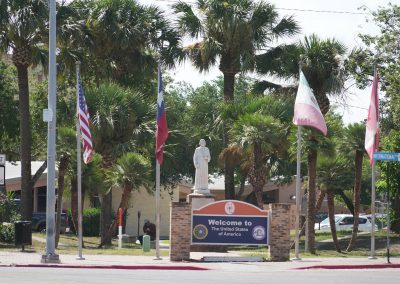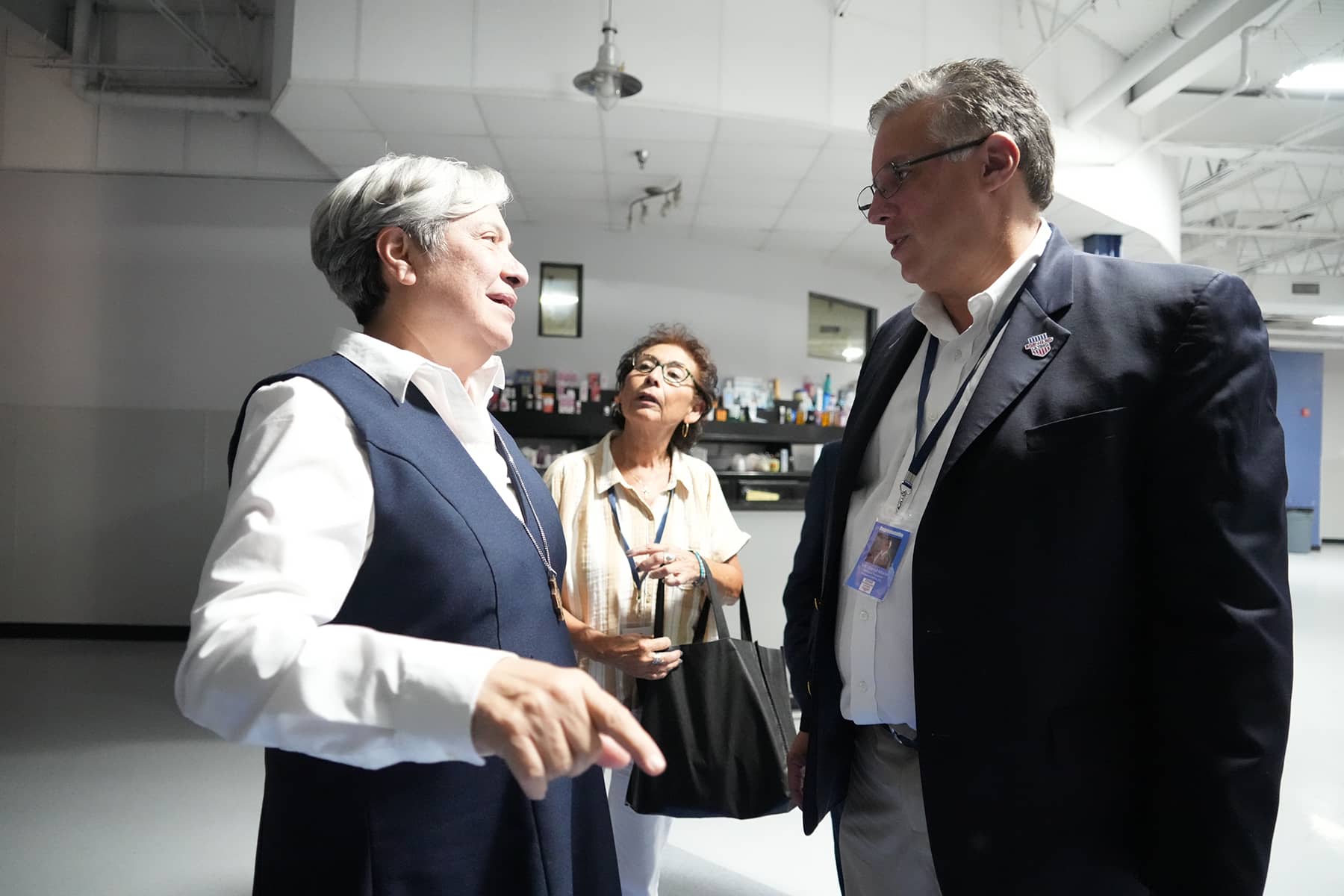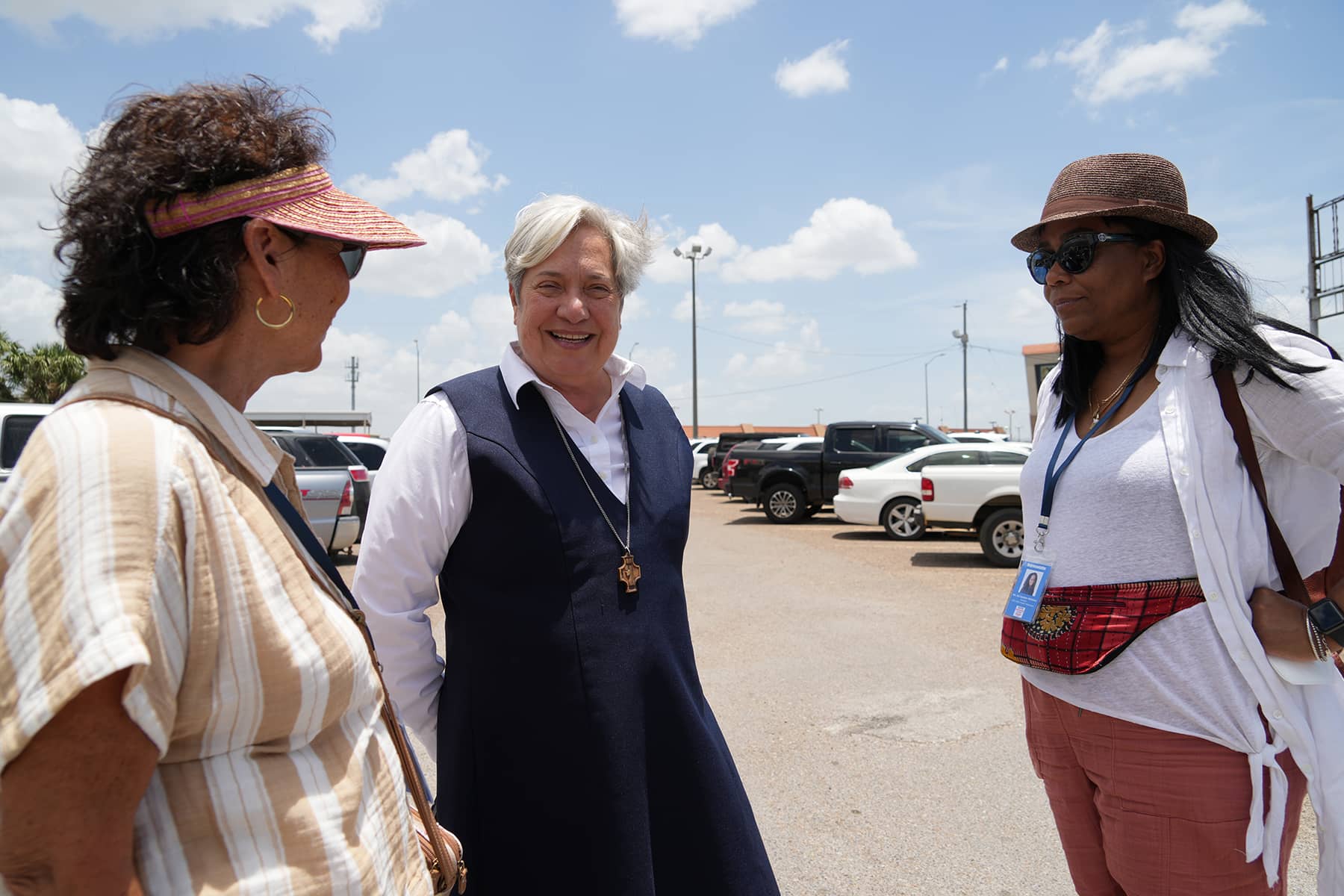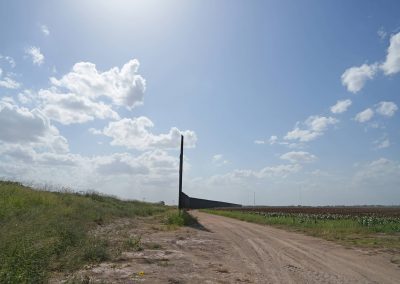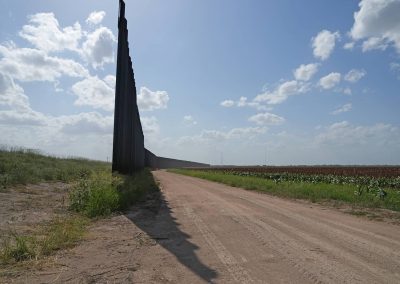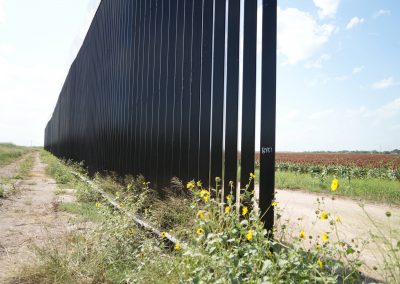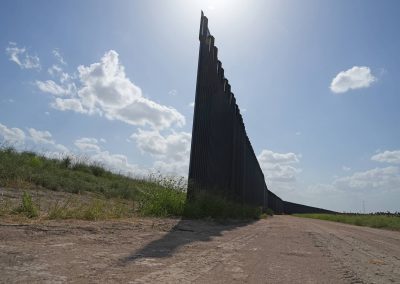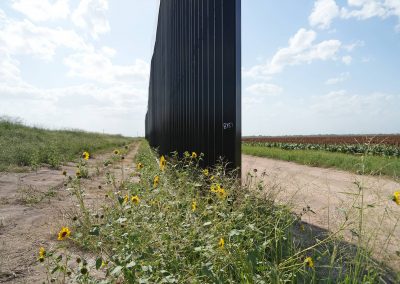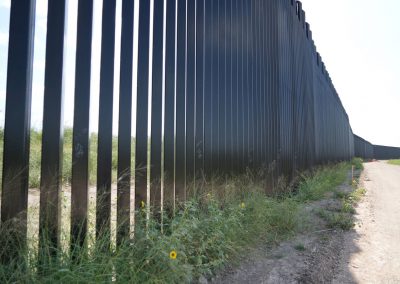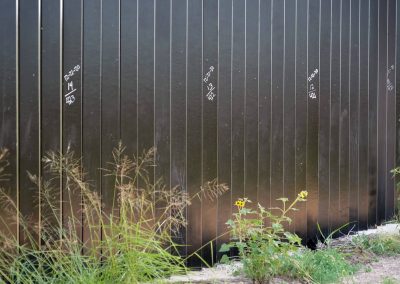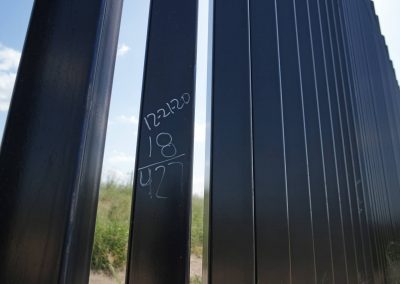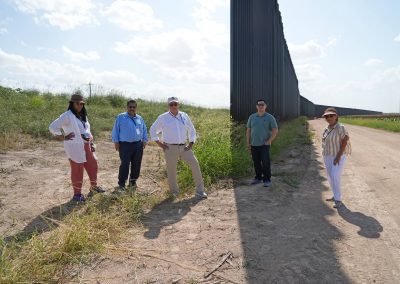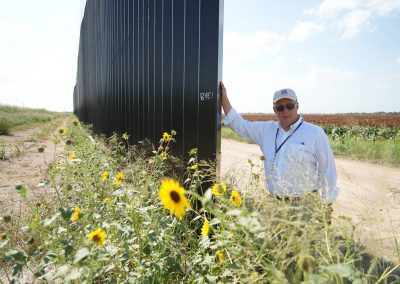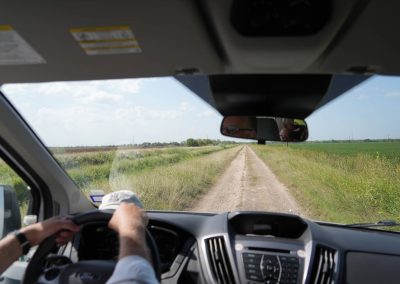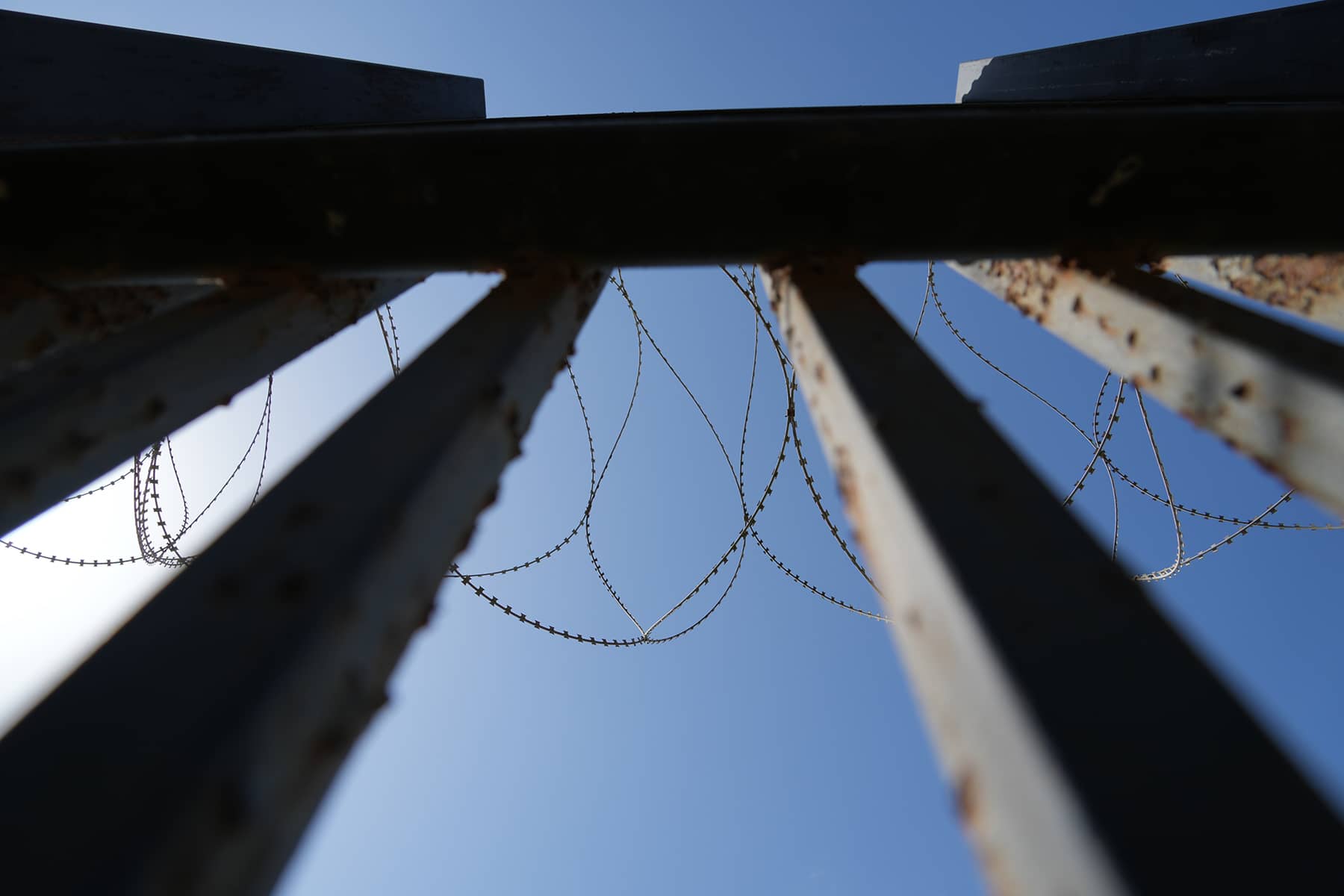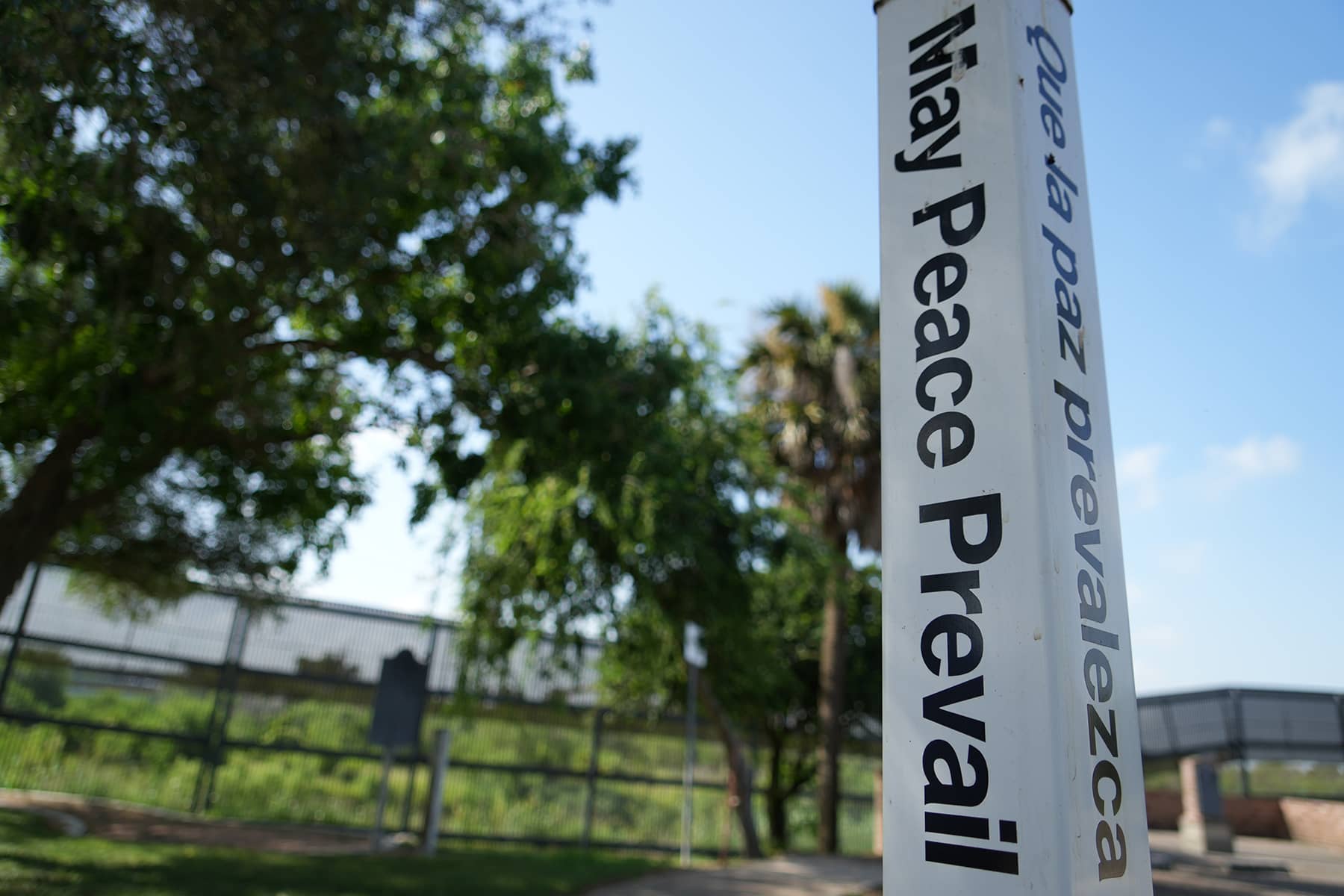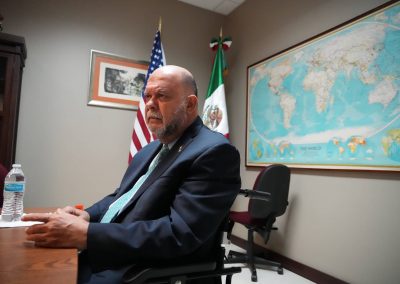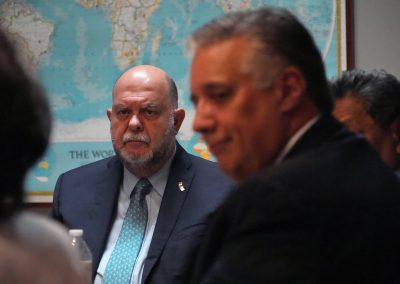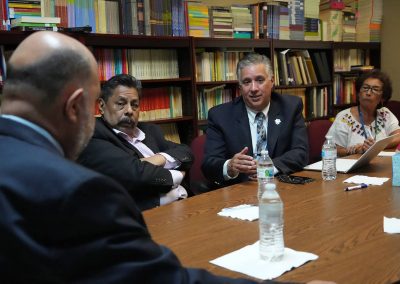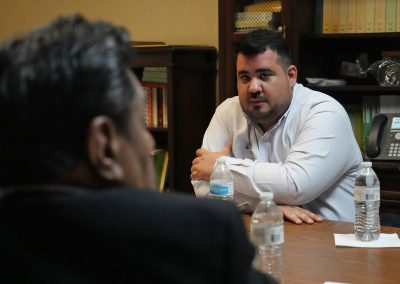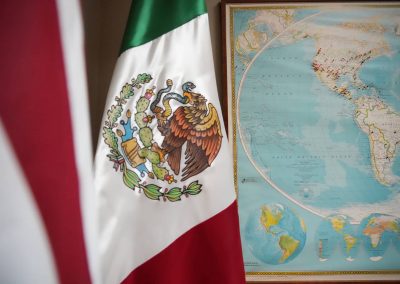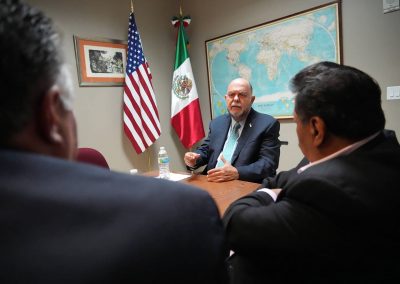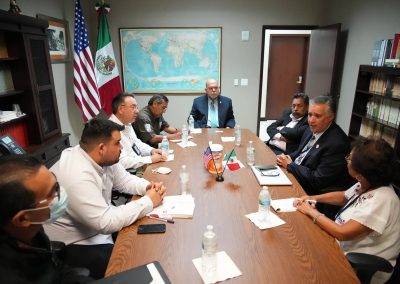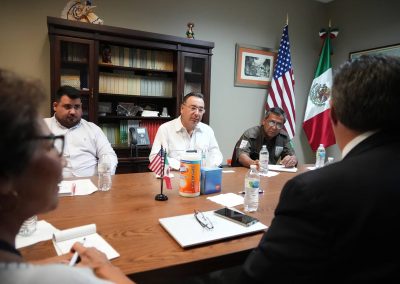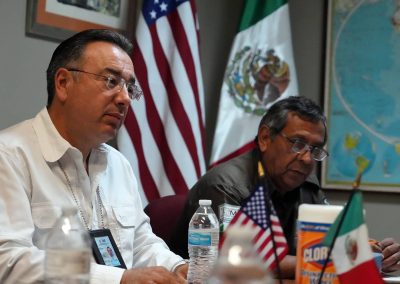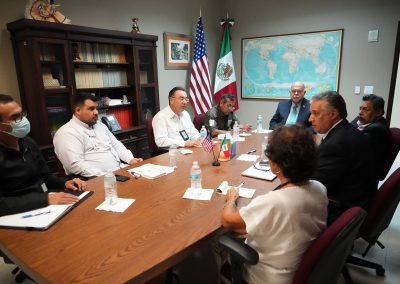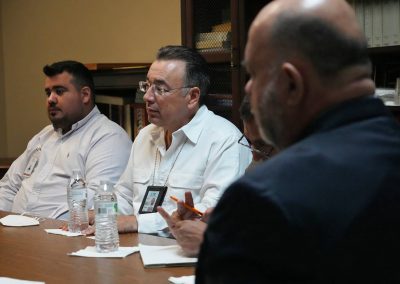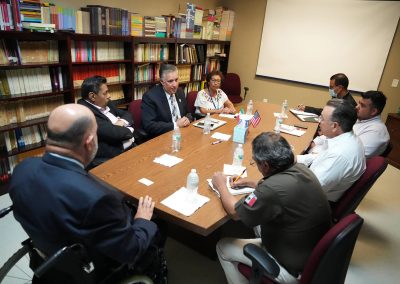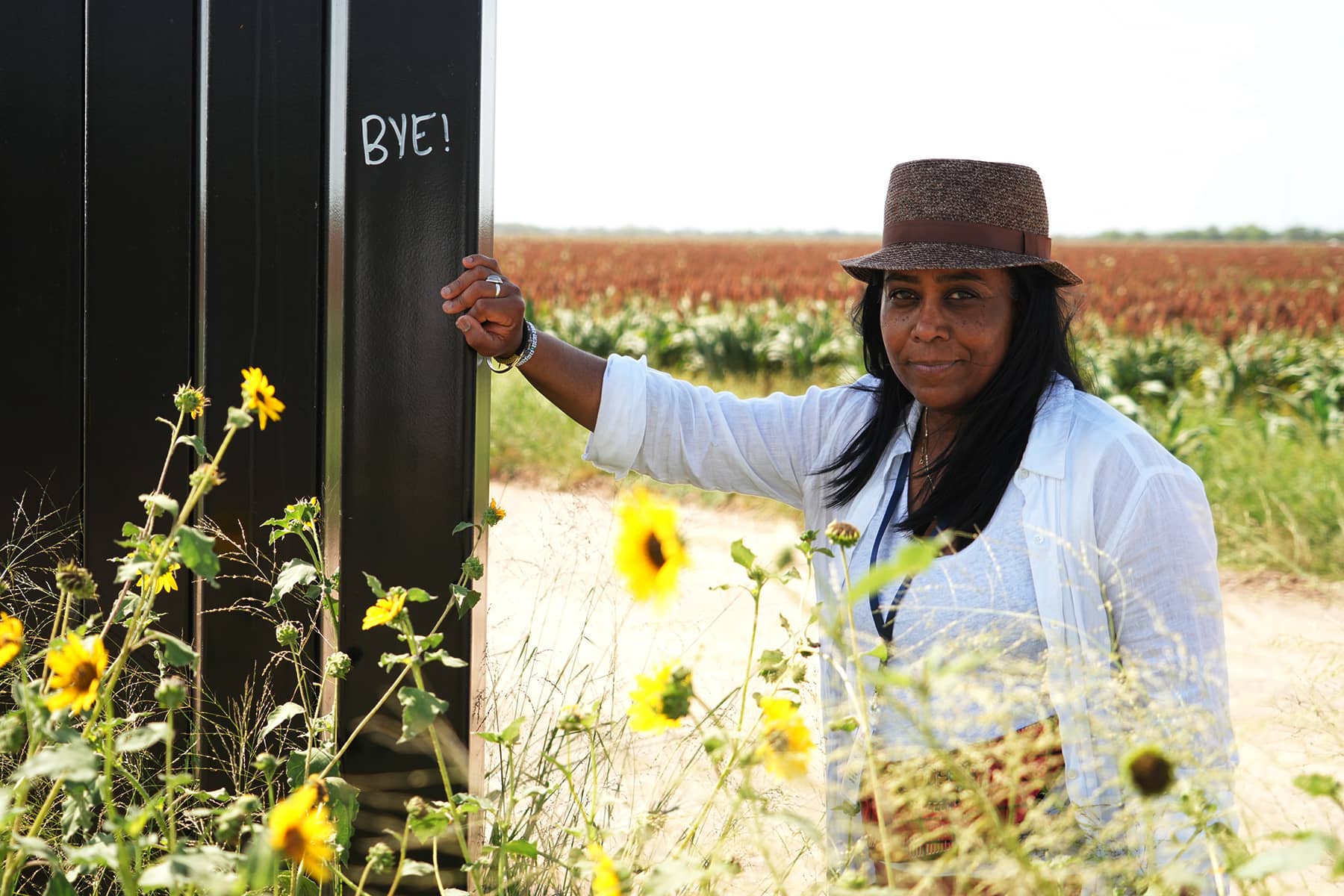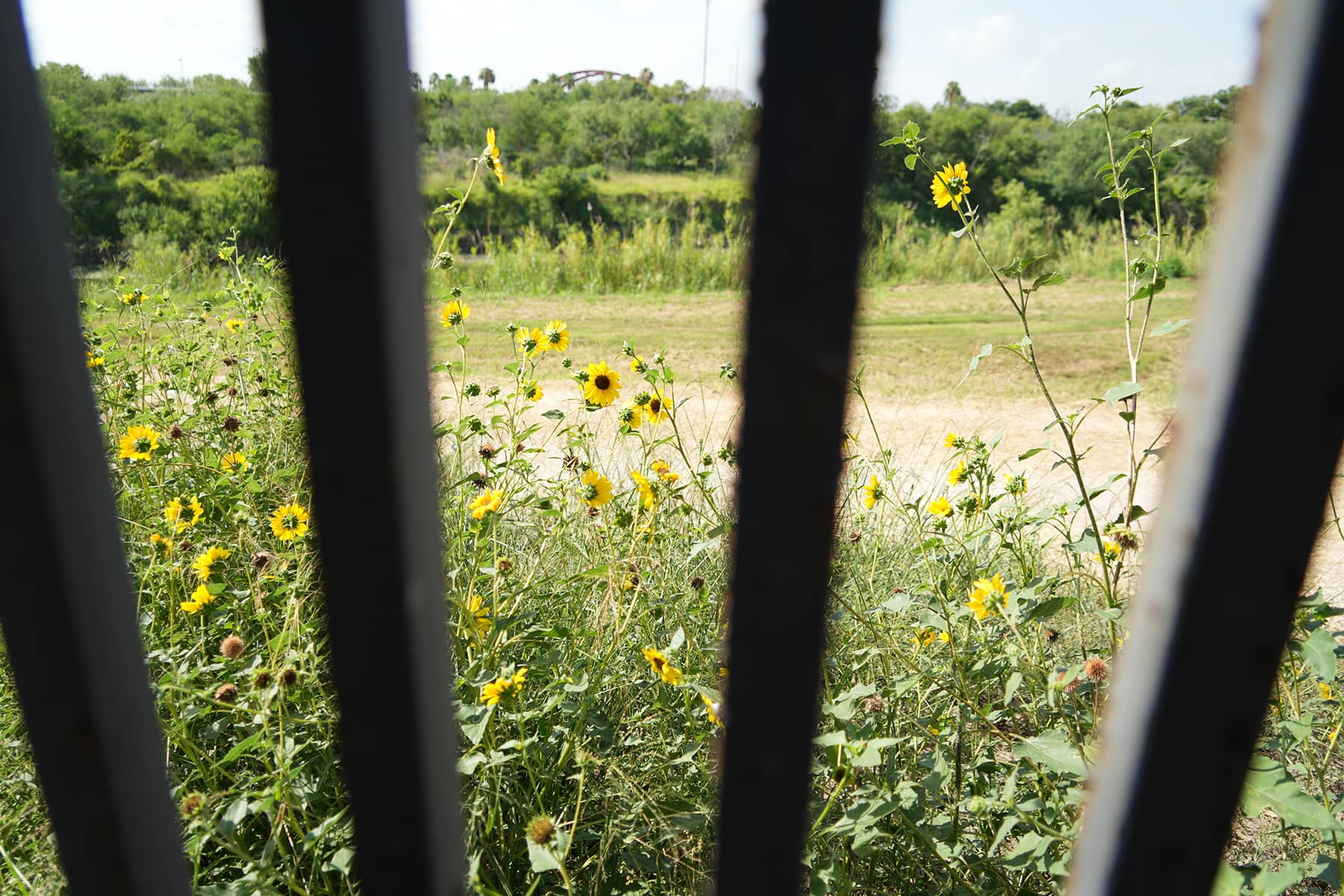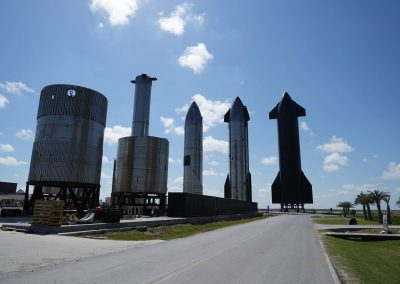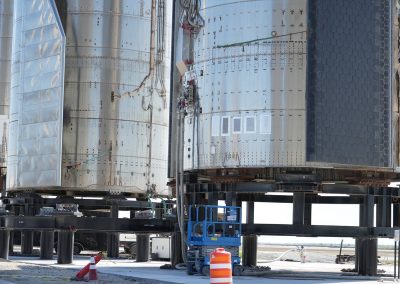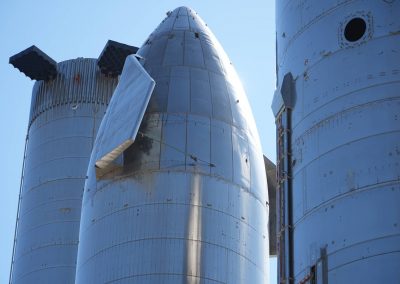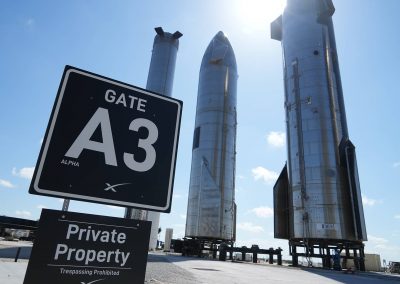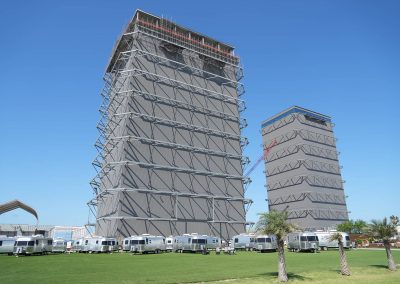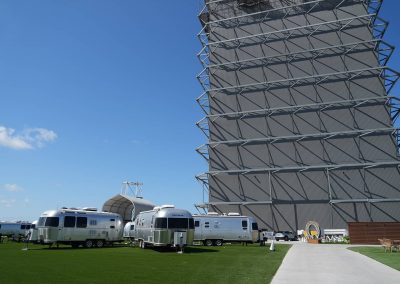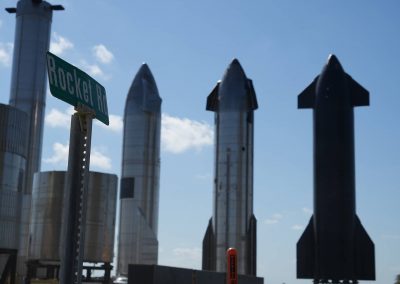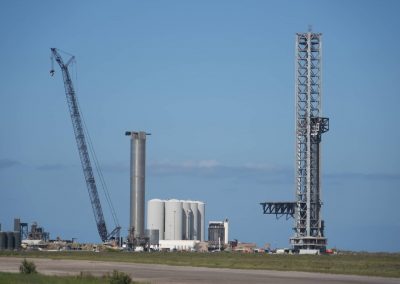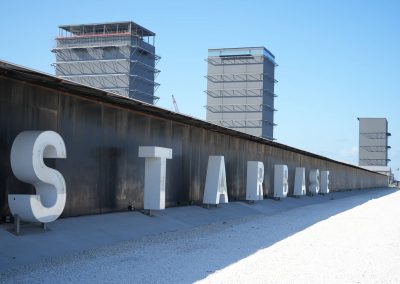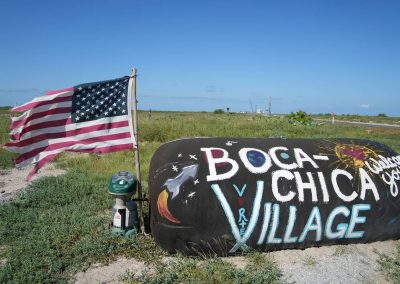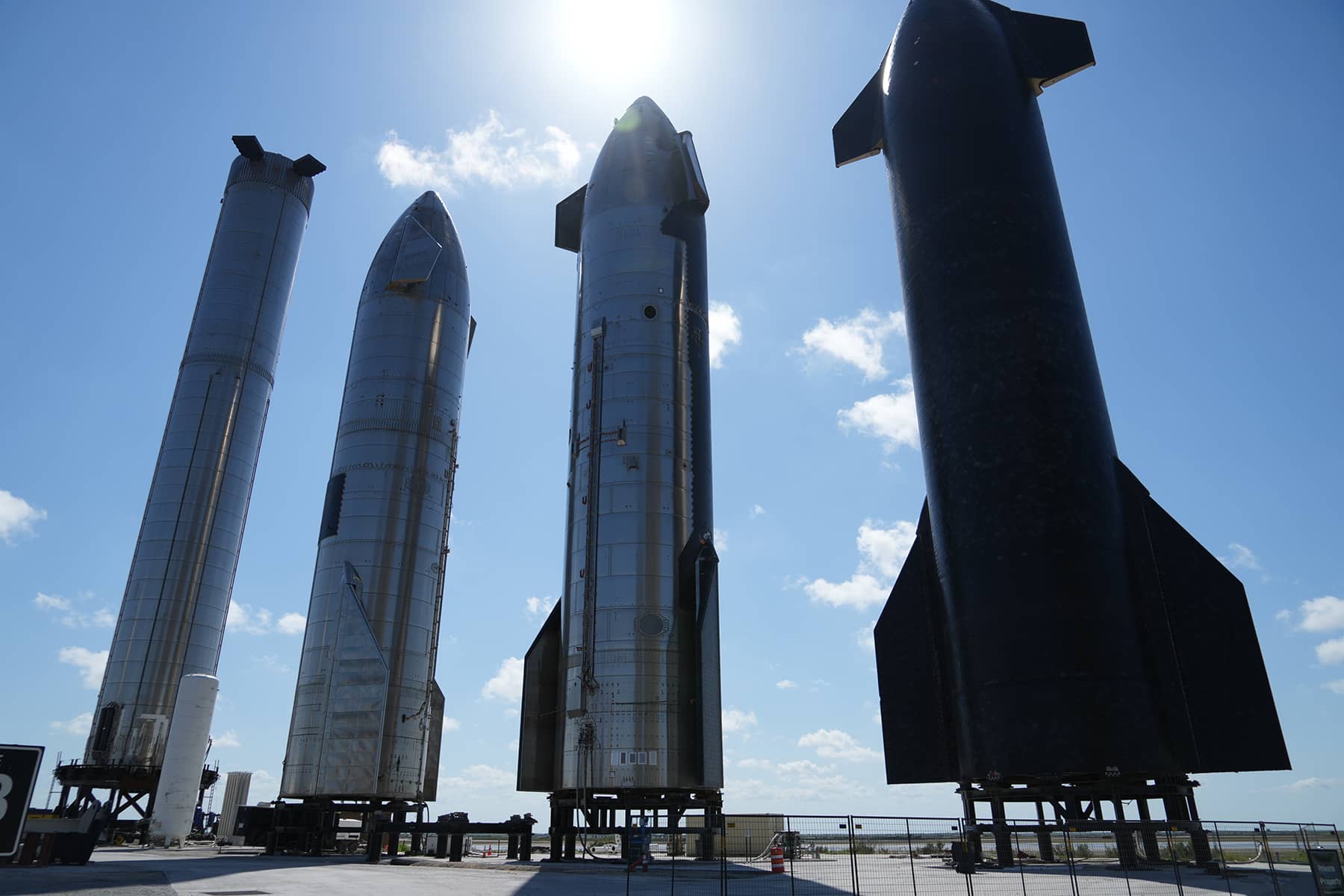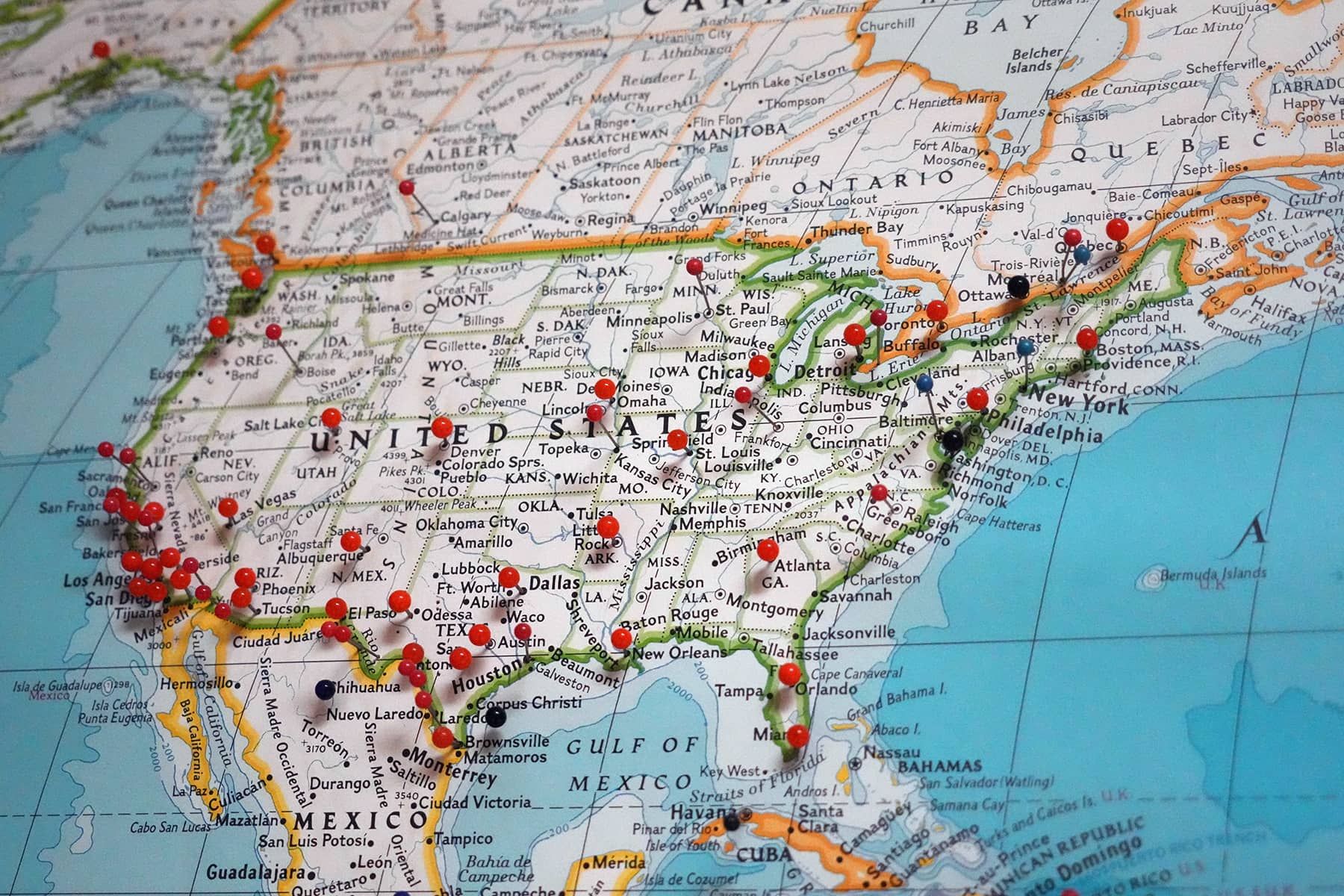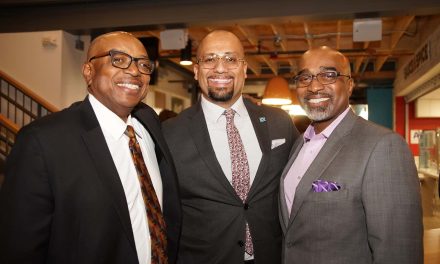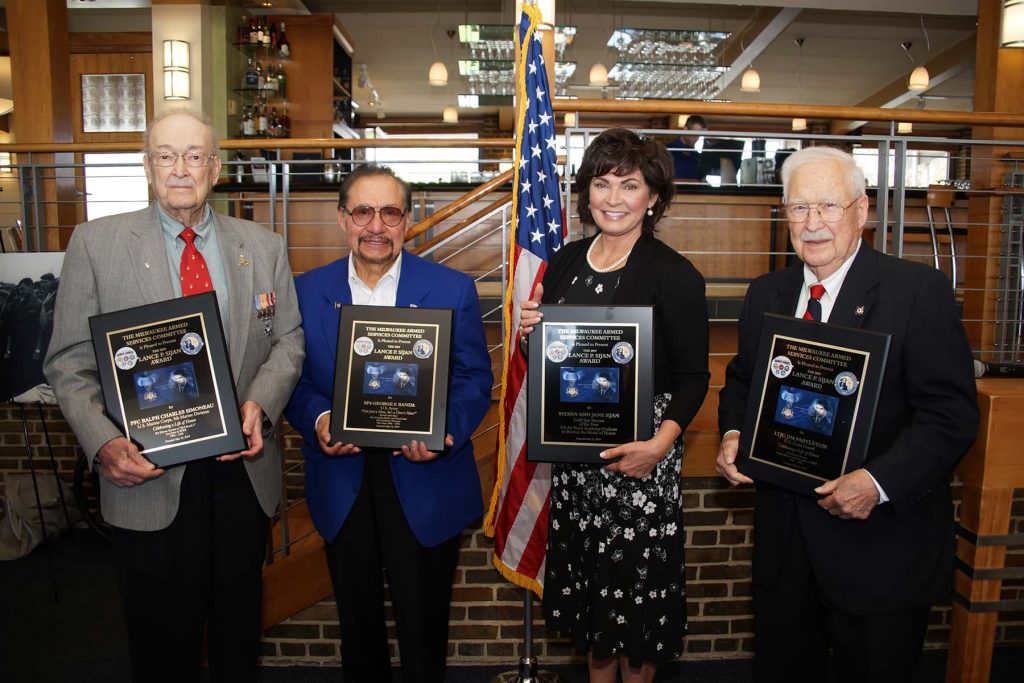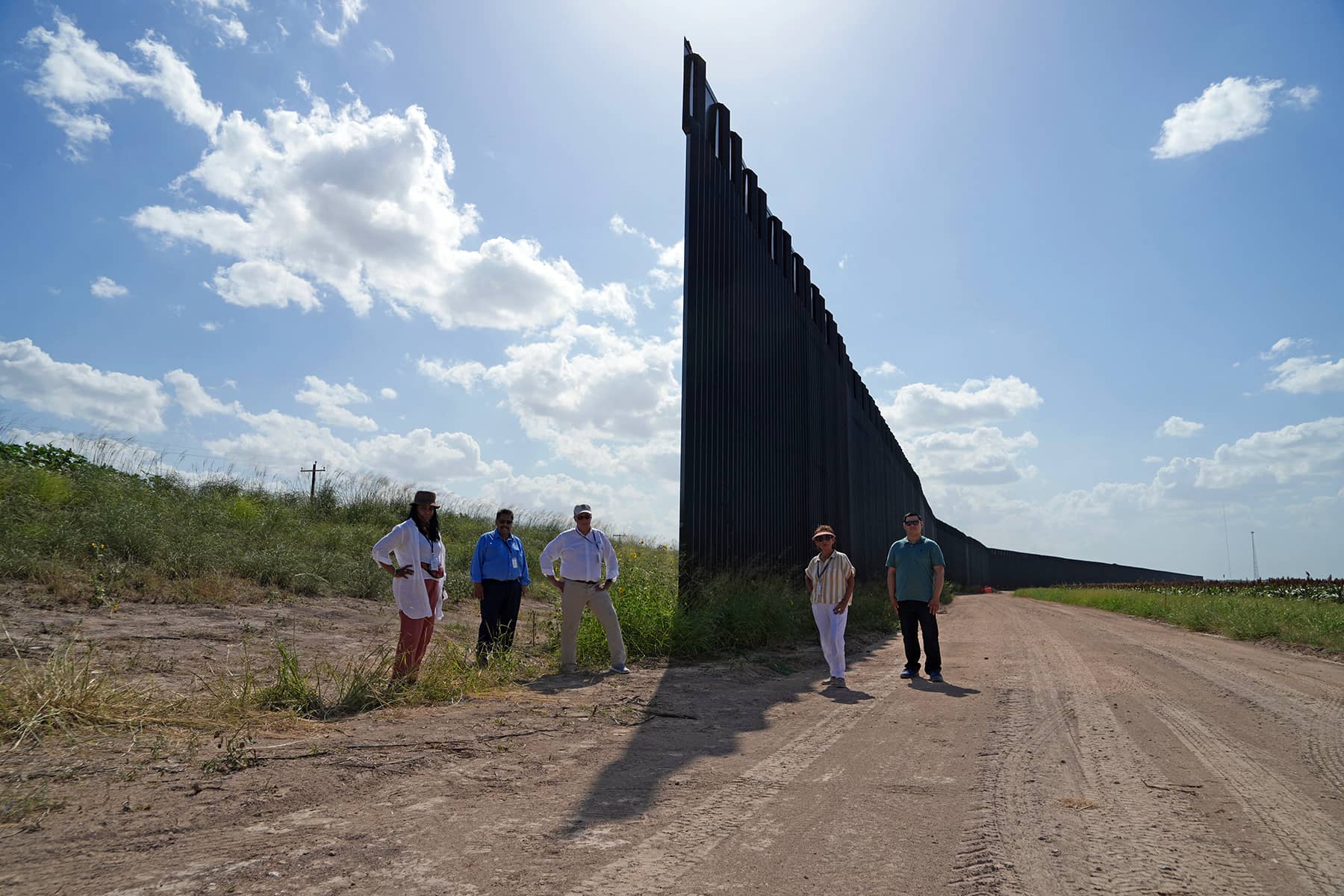
MISSION TO THE BORDER: Milwaukee-based Forward Latino led a delegation to the southernmost border section between Mexico and the United States. Leadership and board members of the nonprofit Hispanic advocacy organization planned the trip as a way to separate politics from the reality on the ground, by seeking first-hand reports for themselves. The group met with U.S. Customs and Border Protection, immigrants, refugees, relief agencies, border city officials, local faith leaders, and the government of Mexico. The spectrum of voices and views offered a closer narrative to the truth of the actual situation at the border. mkeind.com/missiontotheborder
Before leaving on my photojournalism assignment in Ukraine to cover the war in May, I learned that Milwaukee-based Forward Latino had put together a delegation to travel to the Mexico-United States border. A month to the day that I stood at massacre sites in Bucha, I found myself standing at a refugee shelter in Reynosa.
Forward Latino’s “mission to the border” developed after hearing conflicting information from elected officials in the United States about the situation there. The purpose was to get a first-hand report, detached from the politics surrounding the policies of immigration, to remove the hyperbole and fiction, bear witness to the facts, and report those finding to local leaders and policy makers in government.
I was embedded with the national leadership and board members of the Latino advocacy group for the better part of a week, documenting the trip. What the delegation found was unimaginably tragic, in some ways more so than what I experienced in Ukraine in the aftermath of the brutal and unprovoked Russian invasion.
There is no shortage of problems around the issue of immigration, even among allies who must balance expectations with reality. The media typically reports on the most terrible situations, which are inflated by political interests. Such news is weaponized for elections, to place the fault on rival candidates, and perpetuate an overall message fear to voters.
The information consumed by the American public is mostly tainted, and without context. The complications of immigration policies cannot be boiled down simply for who to blame. The truth exists, but it often goes unreported or takes too much effort to find.
There are few if any headlines about the amazing amount of co-operation between governmental and nonprofit entities to process the needs and solve the problems at the Mexican-United States border. That vital and daily work is overshadowed because the situation is undeniably terrible, and there is no way to sugar coat that.
I witnessed a growing humanitarian crisis of historic proportions, met with heroic attempts to address the conditions by local relief agencies, faith leaders, and municipalities. At the border, physical barriers remained in place and were being maintained. Advanced sensors and drones where also used to monitor areas where there was no physical barrier.
Of all the groups interviewed, none place blame on others. There were different missions and views, but all the groups were clearly interdependent and doing the best they could to both manage their responsibilities and offer assistance to partners.
The restrictive immigration policies, including Public Health Rule Title 42 and the Migrant Protection Protocols (MPP) – better known as the “Remain in Mexico policy,” where still being enforced under court order.
Title 42 was first invoked by the Trump administration as a reaction to the COVID-19 pandemic in March 2020. It has been used as a pretext to deport immigrants who are legally seeking asylum in the United States. President Biden has tried unsuccessfully to abolish the controversial policy.
The crisis at the border was not initiated by the current administration, but has long existed and will continue. The conflicting push and pull of immigration policies continues to delay economic stabilization and opportunities. Proactive measures are also needed for the Northern Triangle countries of El Salvador, Guatemala and Honduras, to alter the conditions there that are making an overwhelming number of people flee.
“I knew what I expected to see, but looking into the eyes of the children in recently erected refugee camps, eyes filled with hope, and wondering if I could be the one to help them get to the United States, well, the impact it had on me was something I was not prepared for,” Darryl Morin, National President of Forward Latino told Milwaukee Independent. “We heard story after story from immigrants about why they were forced to flee their home country. The overwhelming number continue to come from the Northern Triangle countries, and Haiti. Most spoke of the extreme violence and poverty they suffered in their homeland, only to suffer more violence during their journey, and then again, from the cartels that prayed on them near the Mexico-United States Border.”
These initial conclusions came after Forward Latino meet with immigrants in relief shelters and immigrant camps, U.S. Customs and Border Protection (CBP), numerous relief agencies and faith leaders on both sides of the border, as well as with representatives from City of Brownsville Office of Emergency Management and Homeland Security, the Mexican Government, and the Mexican National Institute of Migration.
The Forward Latino delegation included members of its National Board of Directors and a representative from the Jewish Community Relations Council of the Milwaukee Jewish Federation. They group traveled from Milwaukee to the southernmost sector of the Mexico-United States border specifically for the fact-finding mission.
The areas visited included the cities of Brownsville, Hidalgo, and McAllen in Texas, as well as the Mexican cities of Matamoros and Reynosa. The delegation also traveled the length of the Rio Grande River from Hidalgo to Brownsville, seeing the various types of barriers constructed, of different heights, and at one point walking around a barrier to inspect it from both sides.
The United States and Mexico have shared their current international border for nearly 170 years. Border crossings remain vital to the economies of Texas and Mexico, and have contributed to each being a vital trading partner. Texas and Mexico share a common border of 1,254 miles, and are connected by 28 international bridges and border crossings that allow commercial, vehicular, and pedestrian traffic.
U.S. Customs and Border Protection is the largest federal law enforcement agency charged with safeguarding the border, staffing more than 21,000 Border Patrol agents. But they were not always necessary, as it previously was not considered a crime to enter the United States without authorization. Immigrants could enter the United States without official permission and not fear prosecution by the federal government for most of American history. That changed in 1929, when Congress outlawed border crossings with the specific intent of criminalizing and imprisoning Mexican immigrants.
The mission by Forward Latino debunked two often used political claims, that United States is experiencing a surge in immigration due the current administration’s “open borders” policies and its removal of all restrictive policies put in place by the prior administration. And that immigrants bring with them crime, drugs, and disease. All those claims were false.
The current surge is primarily being driven by worsening violence and economic conditions in the Central and Southern hemisphere. The growing number of apprehensions, deportations, and expulsions reported by the various sources in the U.S. Department of Homeland Security document this. The situation was also confirmed through through the delegation’s many formal interviews and conversations.
The COVID-19 pandemic initially caused a brief lull in immigration in 2020. But the social and economic aftershocks of the pandemic have deteriorated already fragile living conditions, pushing more people to either relocate for safety or seek sanctuary.
“We also continue to hear comments from elected officials that immigrants are a very real threat to our way of life. What we learned was that immigrants were far more likely to be victims of violence, than to engage in criminal activity,” said Morin. “The cartels infiltrate the makeshift camps and force immigrants of both sexes into prostitution, including children. In addition, the gangs threaten immigrants, demanding they either join their ranks or die.”
Conservative politicians have historically fabricate a sense of urgency about the border situation to justify the implementation of extreme measures. Statistics consistently show, for example, that immigrants do not cause crime and are a benefit of the American economy.
An estimated 11 million undocumented immigrants living in the United States have become vital to key commercial enterprises. Undocumented immigrants make up more than half of the nation’s farmworkers and 15 percent of construction laborers. Wisconsin’s dairy industry would collapse without the work of Latino immigrants, and many of them undocumented.
Forward Latino plans to release a formal report of its findings in the coming weeks, to share with its members and the public. The dates selected for the trip were among the hottest time of the year. The reason was so that the visit would take place under the worst conditions, so that that experience could be evaluated under genuine conditions.
During a break between meetings and visits – and because it was so close, the group visited the nearby SpaceX Starbase at Boca Chica. The site was a mirror of the NASA generation from the 1960s, when science fiction TV shows like “Star Trek” promoted the civilized advancement of the human condition. Just up the beach from the SpaceX launch pads were the border wall, a stark reminder of the contrast that separated two nations.
Just beyond the towering barrier, that ran over the beach and into the ocean, were the refugee shelters we had visited. Those camps held people escaping the trauma, induced by decades of corporate and political manipulations by America.
At those sites, the Milwaukee delegation saw the results of long failed policies, as interests worked to deprive people of their humanity on one side of the border. It was an explicit contrast to the technology and representation of SpaceX, with its vision of the future and effort to push humanity into the stars.
Editor’s Note: On June 30, the day before this feature was published, the U.S. Supreme Court ruled in a 5-4 decision that President Joe Biden could cancel the Trump-era “Remain in Mexico” program. The controversial policy had required authorities to either jail or deport asylum applicants from Central America, denying any entry to the United States until their cases were resolved. With the Supreme Court’s ruling, lower courts must now consider whether the government complied with administrative law to end the policy.
- Sister Norma Pimentel: An impromptu chat with the “Pope’s favorite nun” during a drive to the border
- Mission to the Border: Latino advocacy group leaves politics behind for immigration fact-finding tour
- Mission to the Border: Milwaukee delegation gets first-hand reports from refugee shelters in Mexico
Lee Matz

